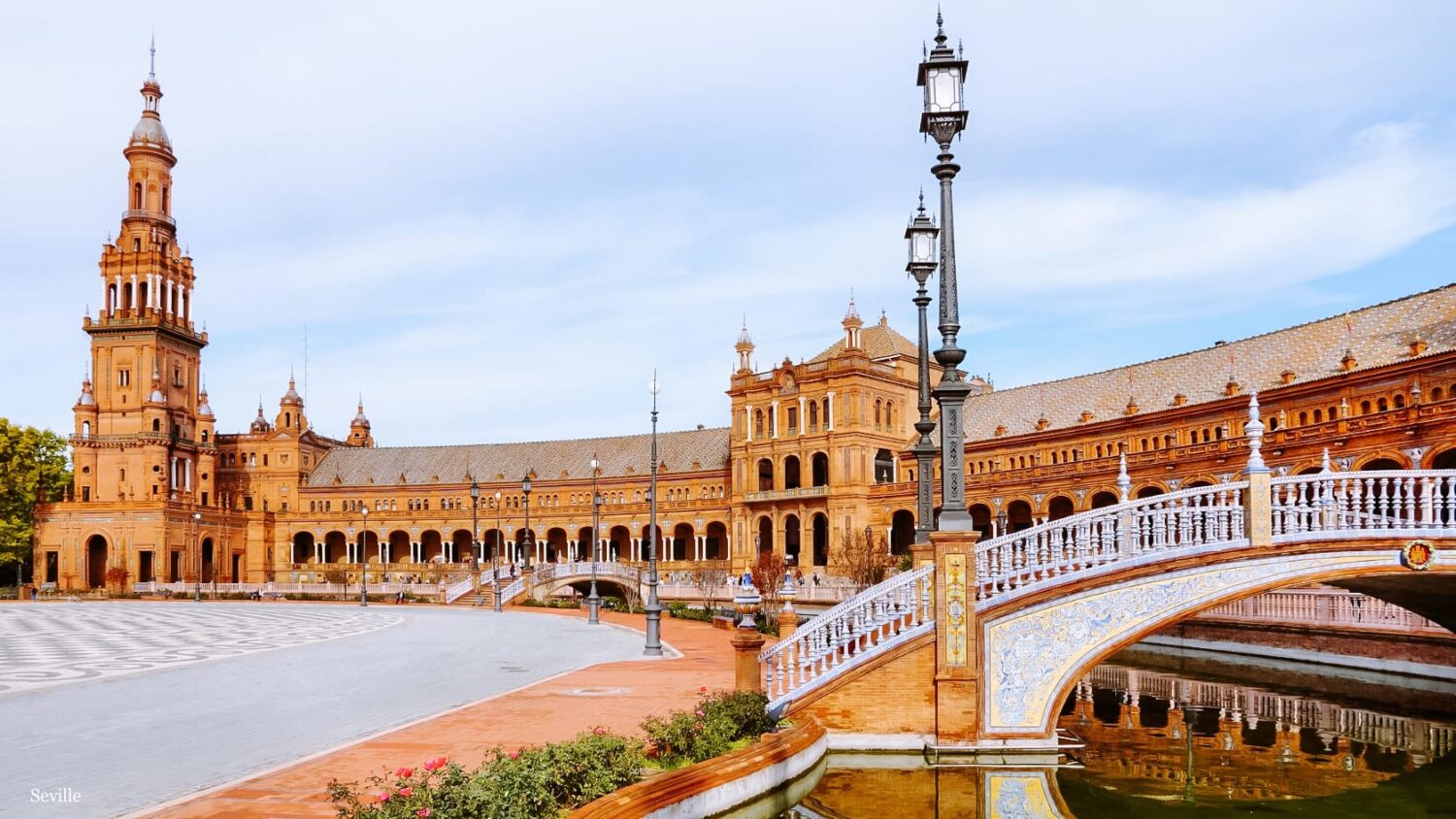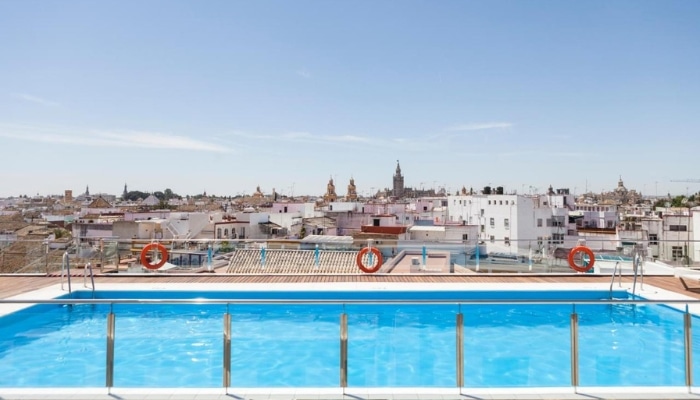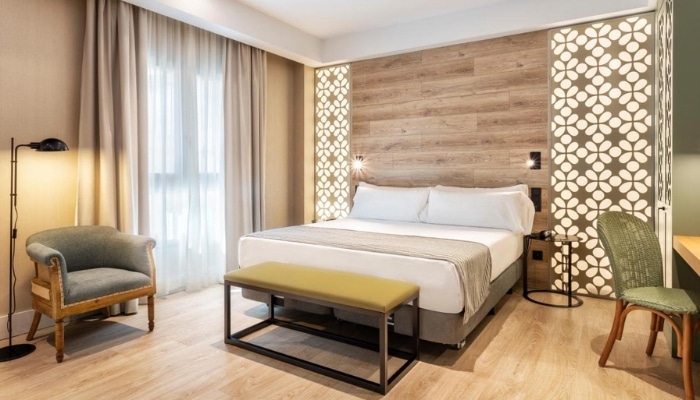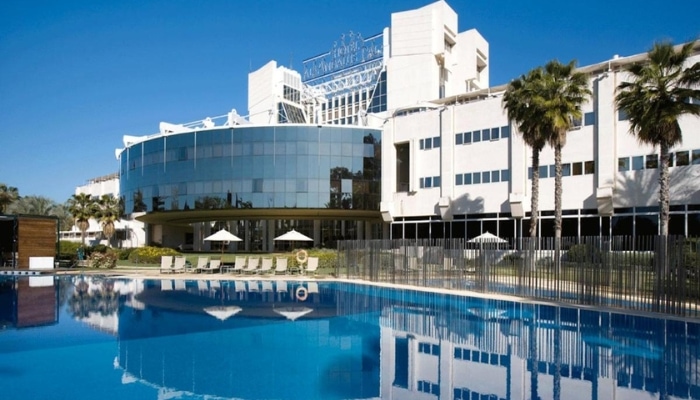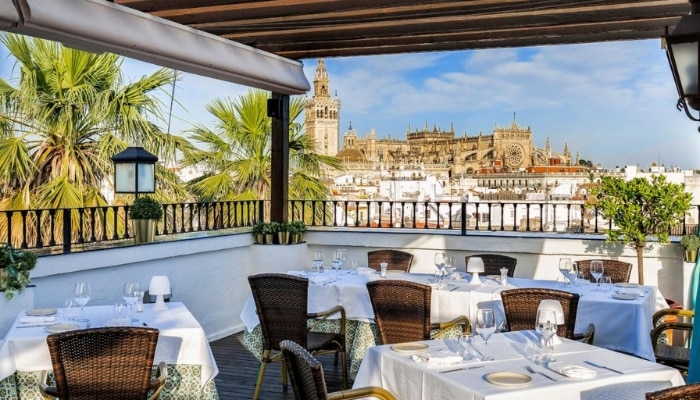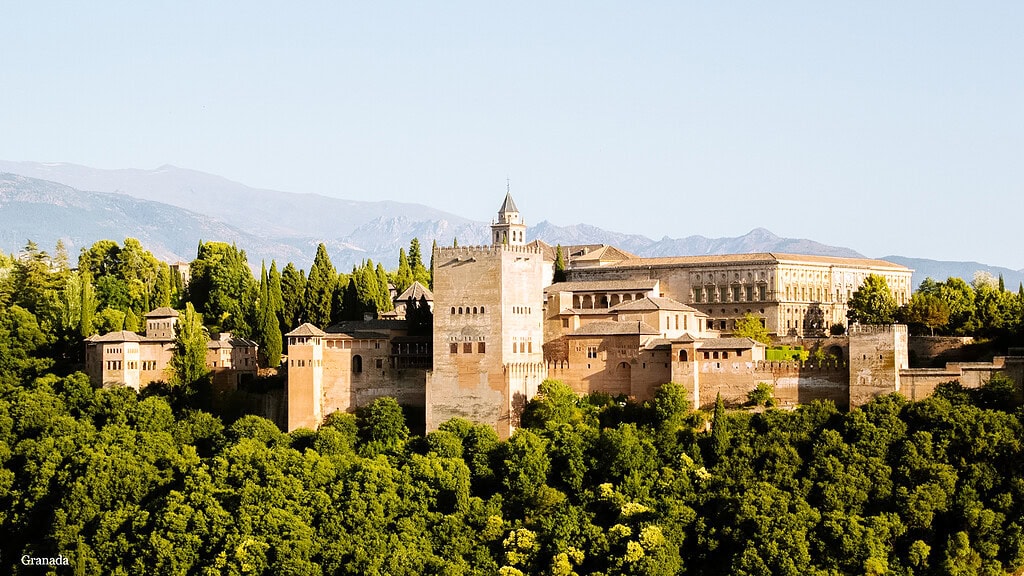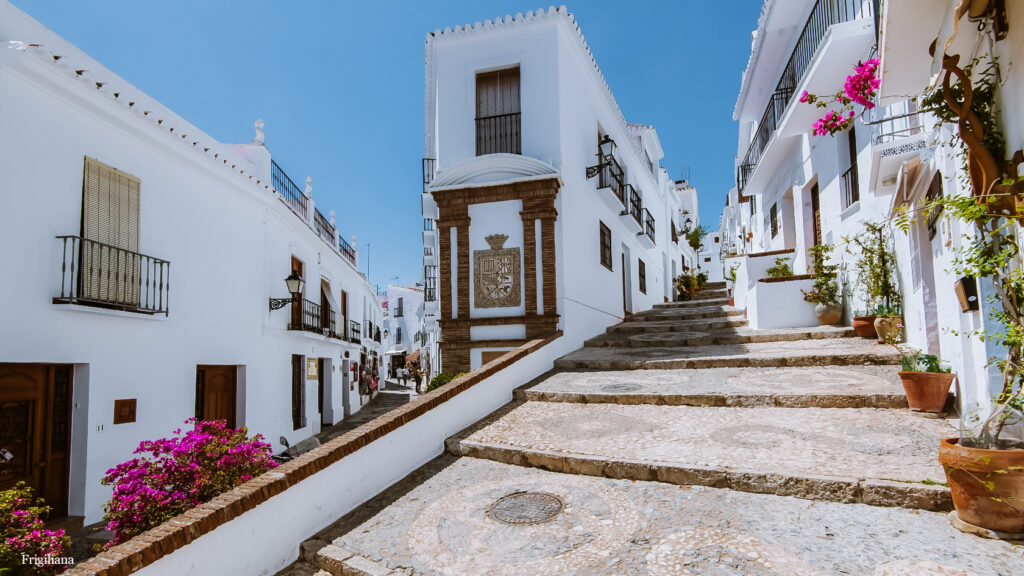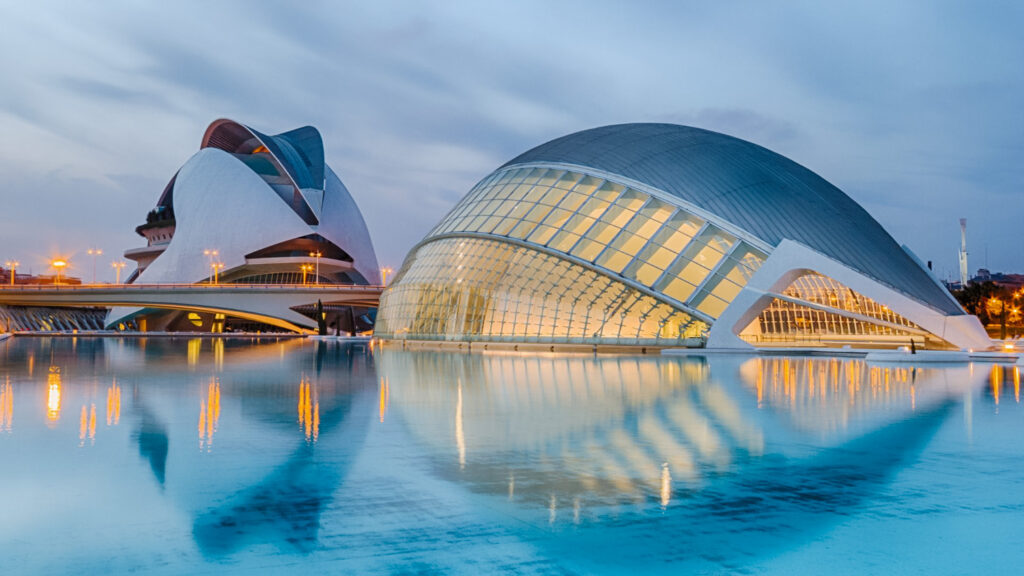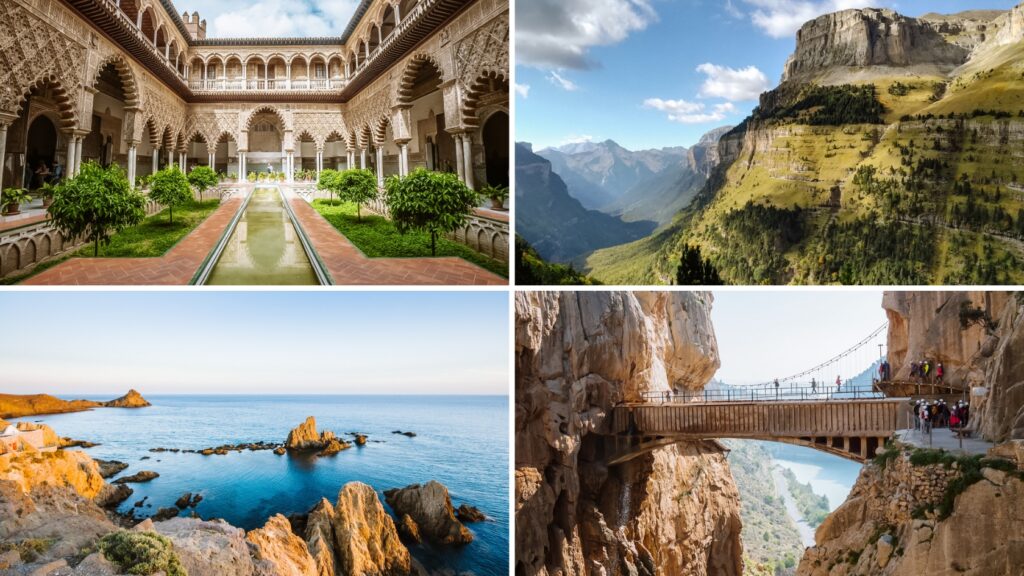Seville in Spain is an amazing city full of Andalusian history and culture. From ancient Moorish palaces to magnificent Gothic cathedrals, the winding streets are lined with tapas bars and cafés where you can sample the finest Spanish cuisine while enjoying the local atmosphere. Check out our travel guide with tips on things to do in Seville.
Today we’ll take a look at the top places and sights to see and visit in Seville, Spain to build an itinerary for 1 or 2 days in Seville. We’ll also add tips on, how to enjoy your visit to Seville (transport, parking, public transport, food, accommodation, map).
- Things to do in Seville: Best Places to visit
- 1. The Alcázar of Seville
- 2. Seville Cathedral
- 3. La Giralda
- 4. Plaza de España
- 5. Torre del Oro
- 6. Metropol Parasol
- Admission and opening hours Metropol Parasol
- 7. Parque de María Luisa
- 8. Santa Cruz
- 9. Real Maestranza Bullring
- 10. Triana Market
- 11. Triana quarter
- 12. Casa de Pilatos
- 13. Collegiate Church of the Divine Saviour
- 14. Palacio de las Dueñas
- 15. Guadalquivir River
- 16. Flamenco Show
- Things to do in Seville – map
- Where to stay in Seville?
- What to taste in Seville?
- How to get to Seville
- Transportat in Seville
- Practical information before visiting Seville
- When to visit Seville?
- More information about Spain
- Summary: Things to do in Sevilla, Spain
Things to do in Seville: Best Places to visit
Seville provides plenty of reasons why it is one of Spain’s most popular cities for travellers. It will enchant you with its charm and beauty thanks to its stunning architecture, vibrant culture and delicious food. From the Giralda Tower to the incredible Alcázar Palace, there’s a reason for everyone to visit Seville.
Let’s take a look at the best places and things to do in Seville:
1. The Alcázar of Seville
The Royal Palace of Alcázar is one of the oldest palaces in use in the world. Its walls and courtyard have stood here since the end of the 11th century. For centuries it has been home to royalty and is witness to a long history that has been written in Seville over the centuries. From the Almohads, who first built the royal palace, to the present day.
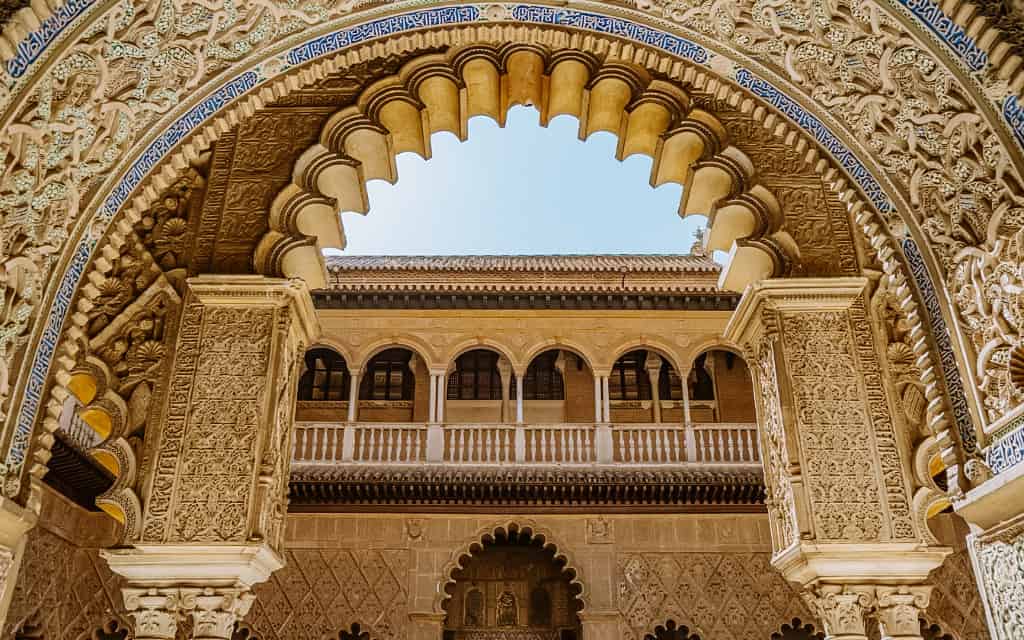
The palace is home to architectural wonders such as finely crafted Mudéjar ceilings and intricate tiles, as well as lush gardens full of orange and myrtle trees.
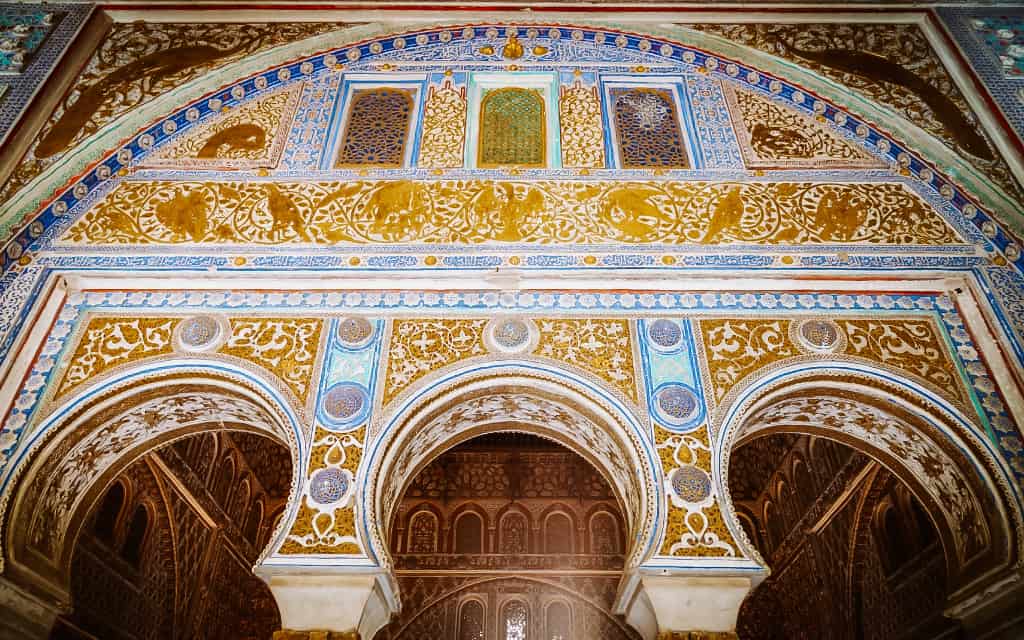
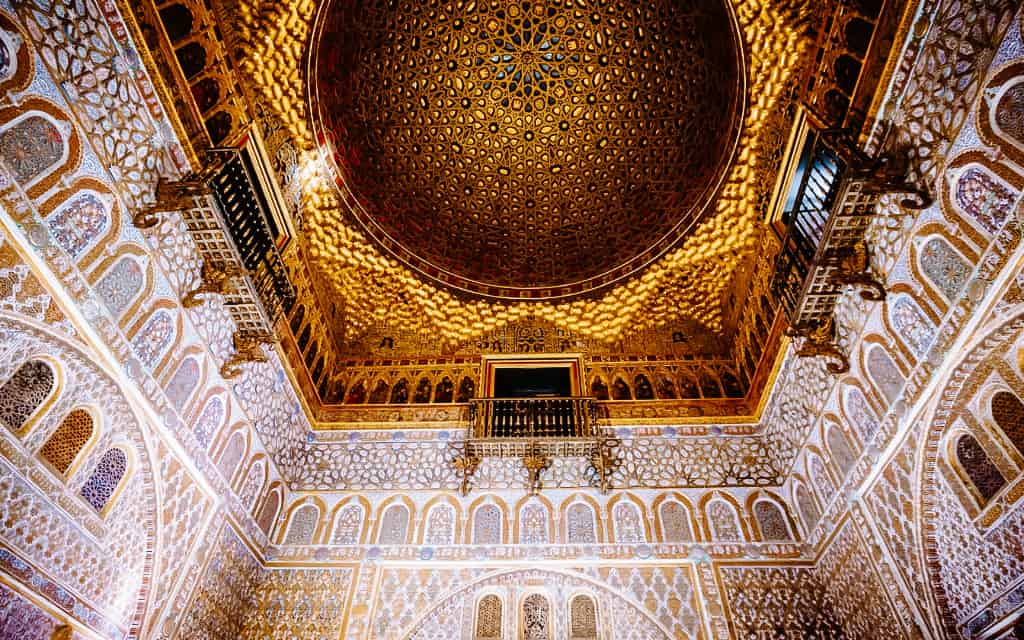
Listed as a World Heritage Site in 1987, the Real Alcázar is an incredible landmark in Seville that is still home to the Spanish royal family today.
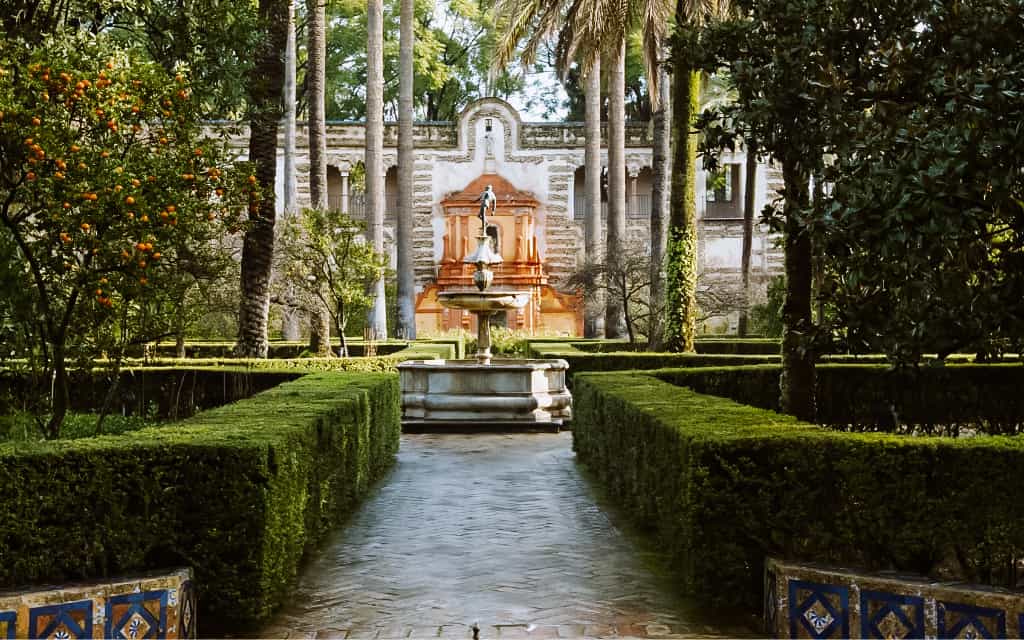
Admission and opening hours Real Alcázar
Admission: Admission to the Real Alcázar is €13.50 and reduced €6 (seniors over 65 and EU students 14-30). Disabled persons and children under 13 are free but need a ticket. Book your tickets by clicking here.
Opening hours: Opening hours to Real Alcázar vary according to the season – from 1 April to 28 October is open 9:30-20:00 (last entry at 19:00) and from 29 October to 31 March is open 9:30-18:00 (last entry at 17:00).
Allow about 2-3 hours for the tour.
☞ How to skip the queues for Real Alcázar: The queues for Real Alcázar are really long, especially in high season, and often run across the entire Plaza del Triunfo, where the entrance to Real Alcázar is located. The easiest way to skip the ticket queue is to buy advance tickets online.
2. Seville Cathedral
The Cathedral of Our Lady of Seville is a vibrant and breathtaking monument that is one of the most beautiful sights in Seville and the whole of Andalusia. Built between 1402 and 1507, the Gothic masterpiece was designed to surpass the Hagia Sophia in size, which at the time was the largest cathedral for more than 1,000 years.
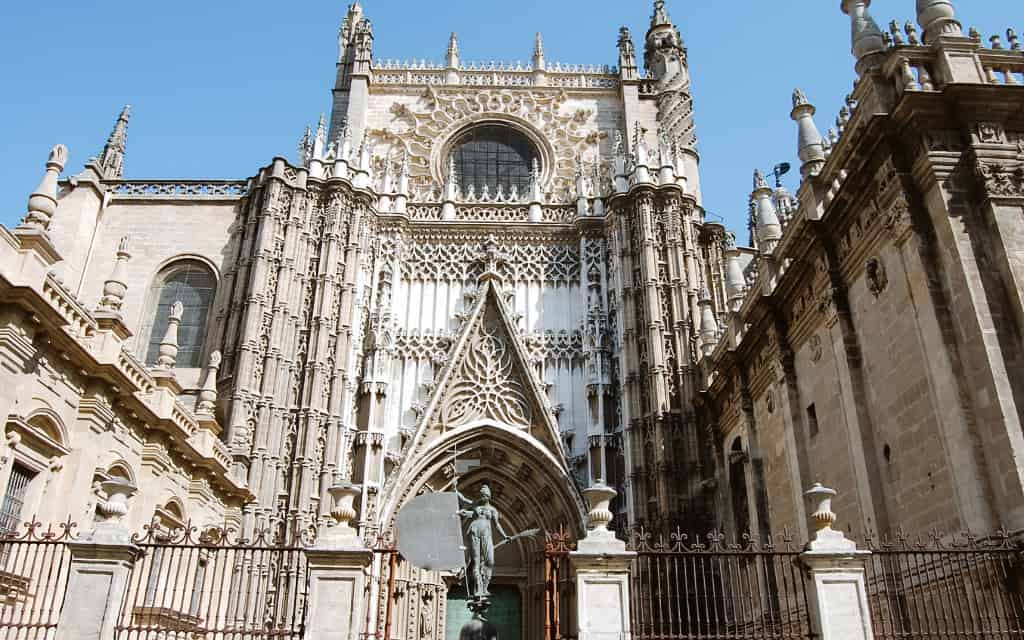
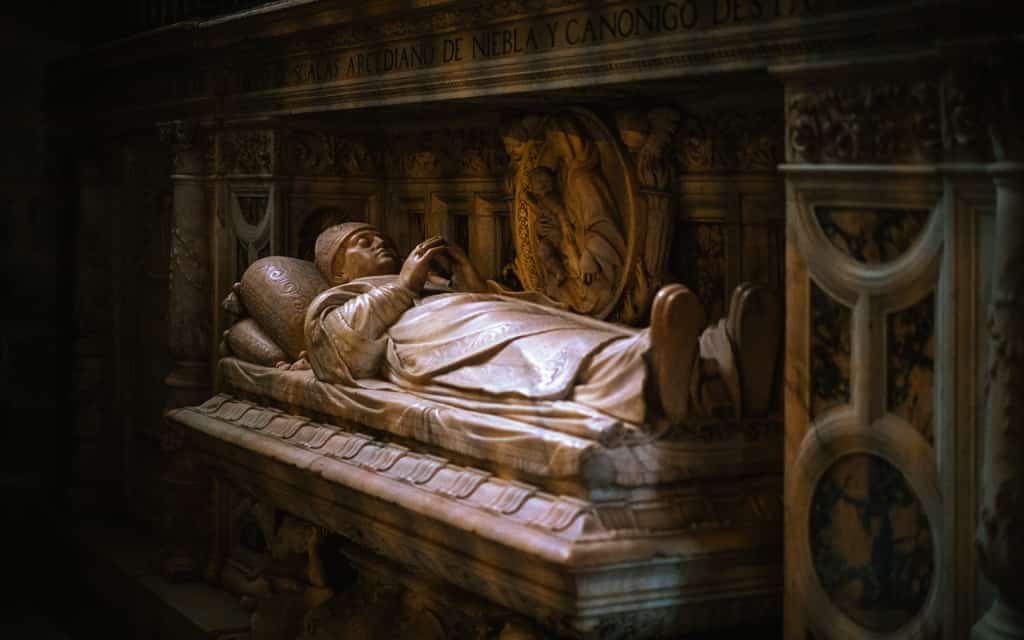
Today the cathedral is in Seville 3rd the largest cathedral in Europe (after St Peter’s Basilica in Rome and St Paul’s Cathedral in London). It has a magnificent interior with a long nave, chapels and the impressive tomb of Christopher Columbus. The cathedral is another UNESCO World Heritage Site in Seville.
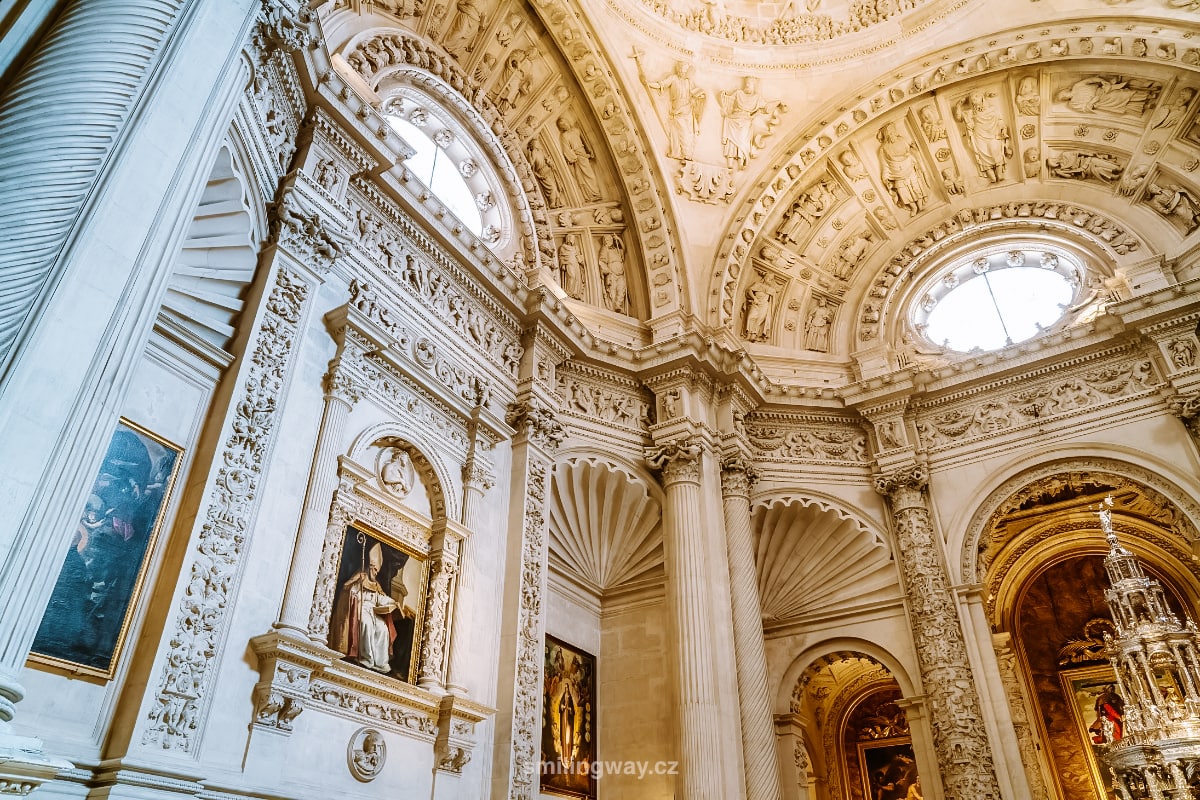
Admission and opening hours of Seville Cathedral
Admission: Admission to Seville Cathedral is €13 and a reduced €7 (seniors over 65 and students aged 14-25). Free admission for children up to 13 years of age and disabled persons with disabilities over 65% including an accompanying person.
Opening Hours: The opening hours of the cathedral and bell tower are Monday to Saturday 11:00-18:00 and Sunday 14:30-19:00. Allow approximately 75 minutes for the tour.
☞ How to skip the queues for Seville Cathedral: Due to the shorter opening hours, there are queues to enter the cathedral. By booking tickets in advance, you can get in without waiting – you go through the entrance on the right side of the cathedral, to the left of the bell tower. Your ticket to the cathedral also includes the La Giralda bell tower and the El Salvador church (more on both in a moment).
While you’re at the cathedral, check out the Plaza del Cabildo. A beautiful, somewhat hidden square with an arcade.
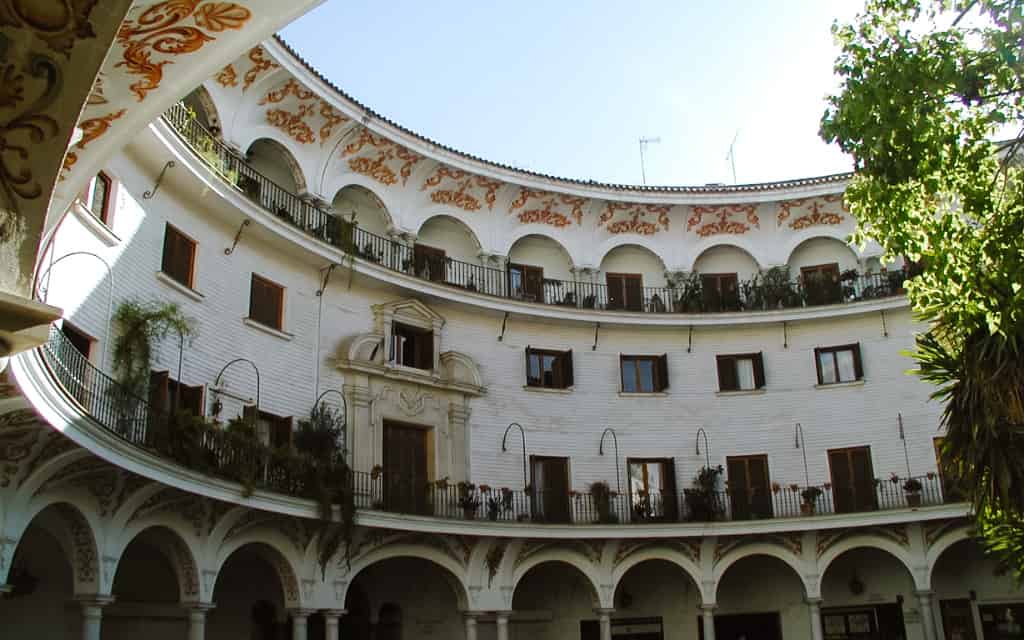
3. La Giralda
La Giralda is a 104 metre high bell tower and minaret that must be on your list of things to visit in Seville. It was originally part of the city’s great Almohad mosque before it was built in 16th century was rebuilt into a Christian bell tower in Renaissance style.
Today, it is an iconic symbol of Seville thanks to its distinctive architecture and the magnificent view from the top of the tower, and has rightly earned its inclusion on the UNESCO heritage list.
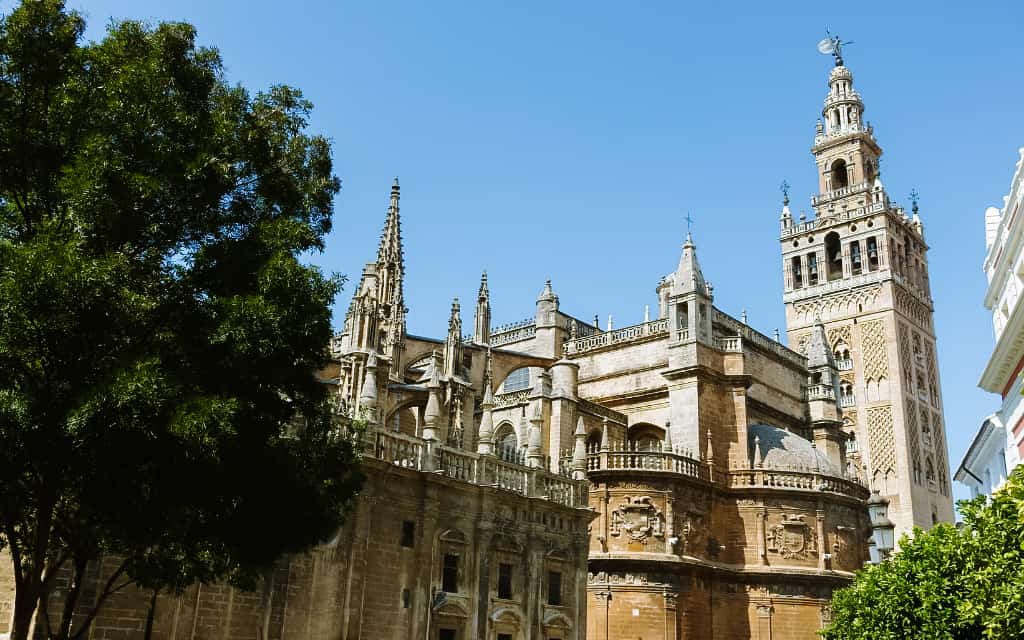
La Giralda has inspired architects from around the world, including those responsible for creating replicas such as The Ferry Building in San Francisco and the Wrigley Building in Chicago.
La Giralda is right next to the cathedral. Admission is included in the cathedral entrance fee. Opening hours coincide with those of the cathedral.
Hotels in Seville 😴
4. Plaza de España
Plaza de España is the most famous square in Seville, designed by Aníbal González for the Ibero-American Exposition in 1929.
Its unique circular shape with two tall towers on either side will be familiar to Star Wars fans as it appeared in an episode.
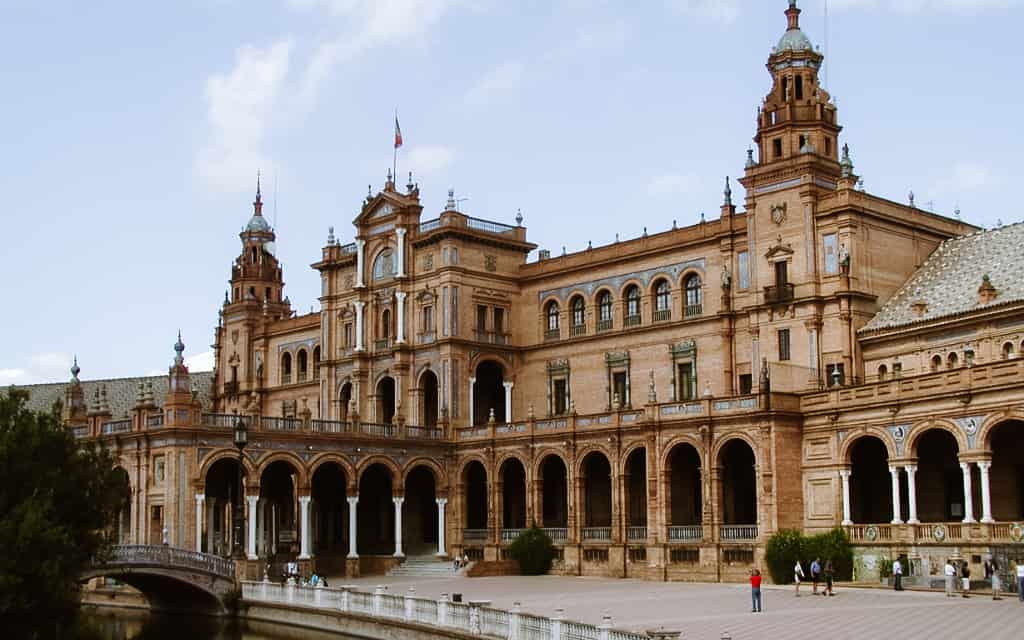
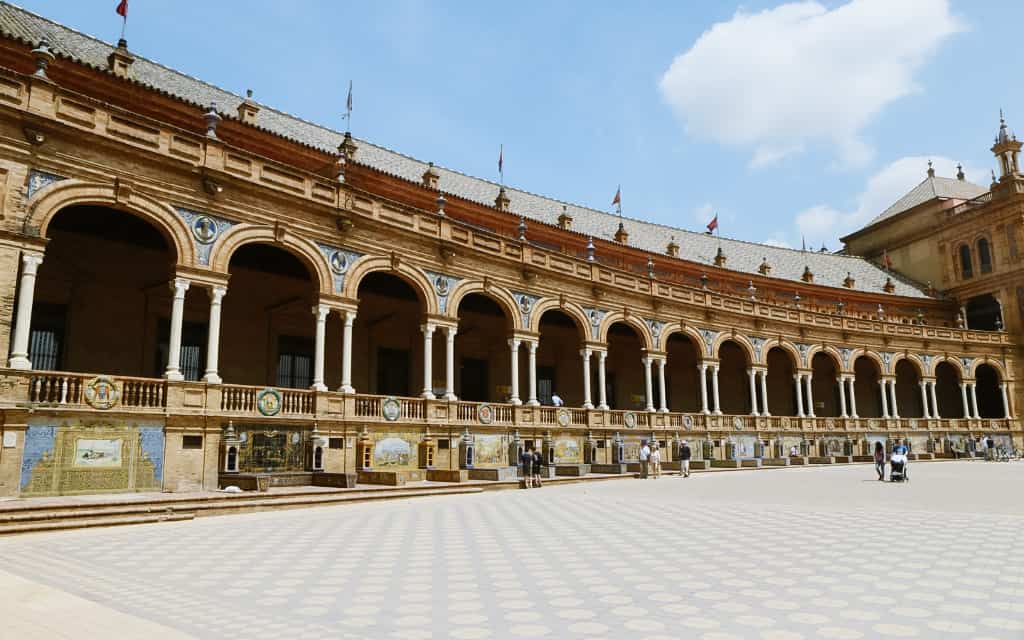
There are 52 benches in the square with mosaics representing all the Spanish provinces. In the middle stands a large fountain with a circular channel and decorated footbridges. You can even take a boat ride on the canal.
The whole square is literally decorated with azulejos, ceramic tiles typical of Andalusian architecture.
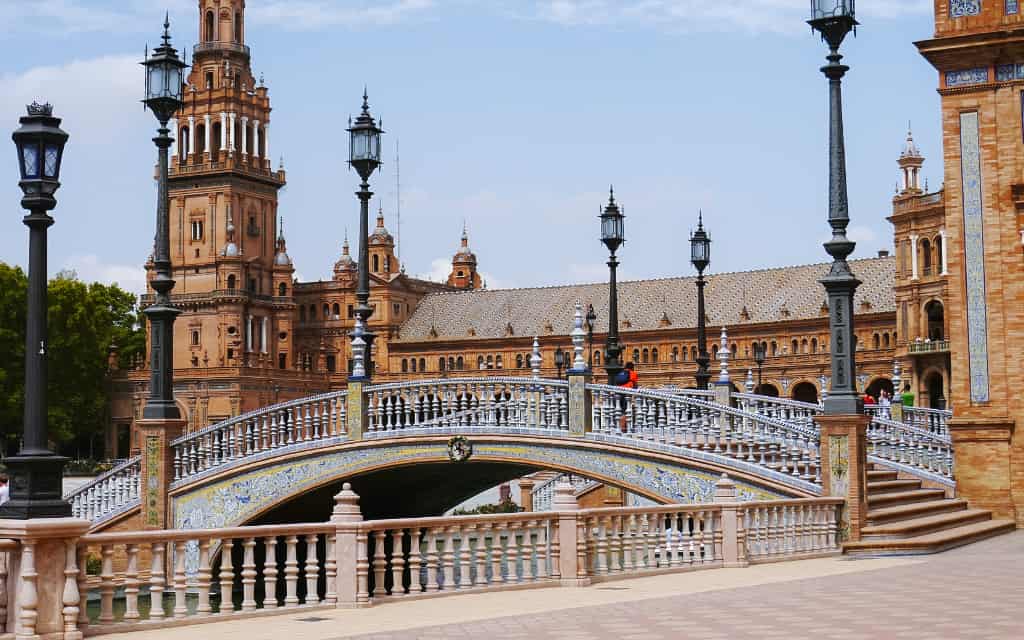
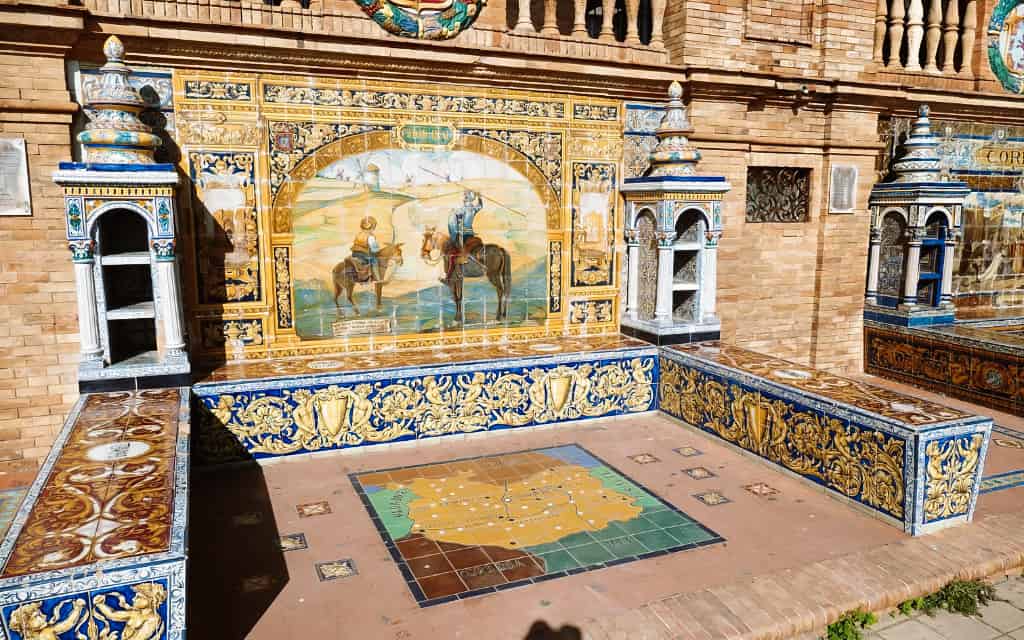
5. Torre del Oro
The Torre del Oro is a watchtower that has stood on the banks of the Guadalquivir River since 1221, when it was built by the Almohades to defend against enemy ships. The Golden Tower was a symbol of Seville’s golden age and served as a prison in the Middle Ages. Today it houses the Maritime Museum.
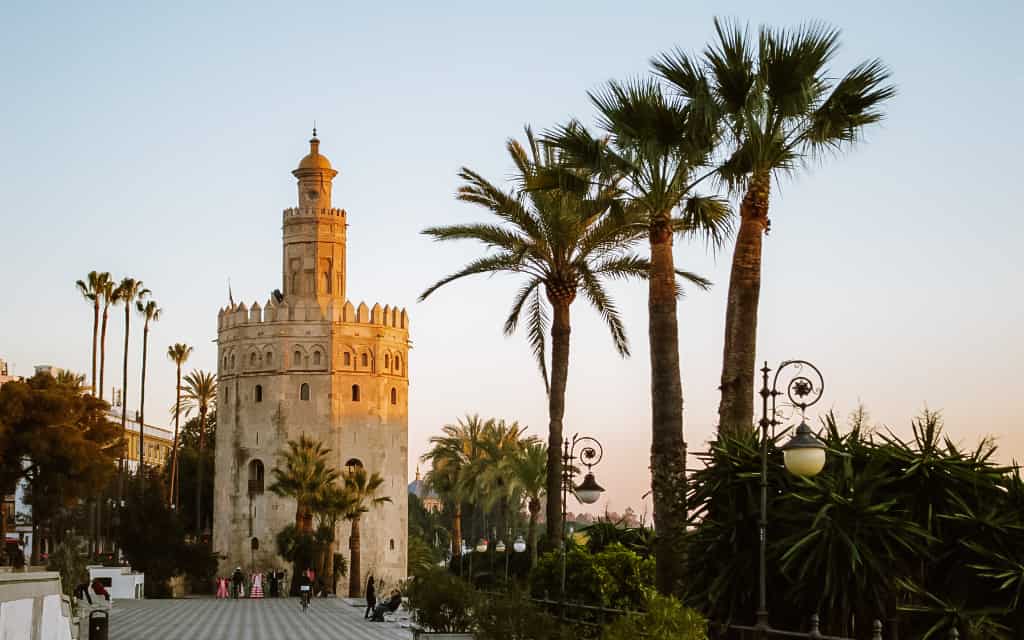
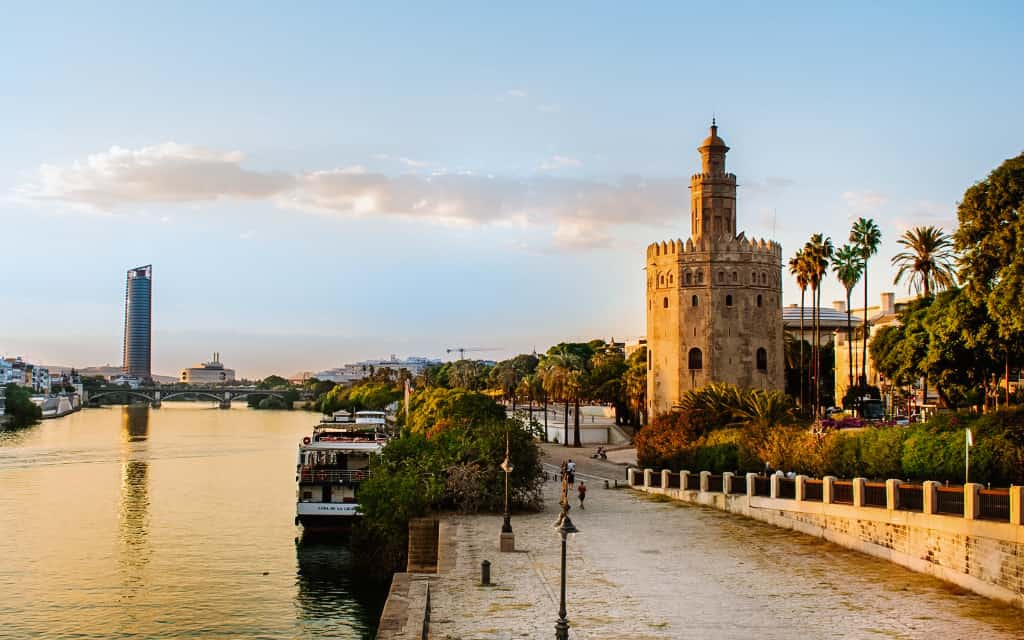
Admission: Admission to the Torre del Oro is €3 and a reduced price of €1.50 (students, children 6-14, seniors over 65). Every Monday, admission is free for all.
Opening hours: Torre del Oro is open daily 9:30-18:45 and on weekends 10:30-18:45.
Tickets for the most popular sights in Seville
6. Metropol Parasol
As you wander through the winding streets of Seville, you’ll come across an architectural marvel – the Metropol Parasol. This building, which rises high into the sky, is known as the “Mushrooms of Seville” (Las Setas de Sevilla). It was designed by German architect Jürgen Mayer in 2011.
Metropol Parasol is located in Plaza de la Encarnación. It is the largest wooden structure in the world (150 x 70 metres and 26 metres in height).
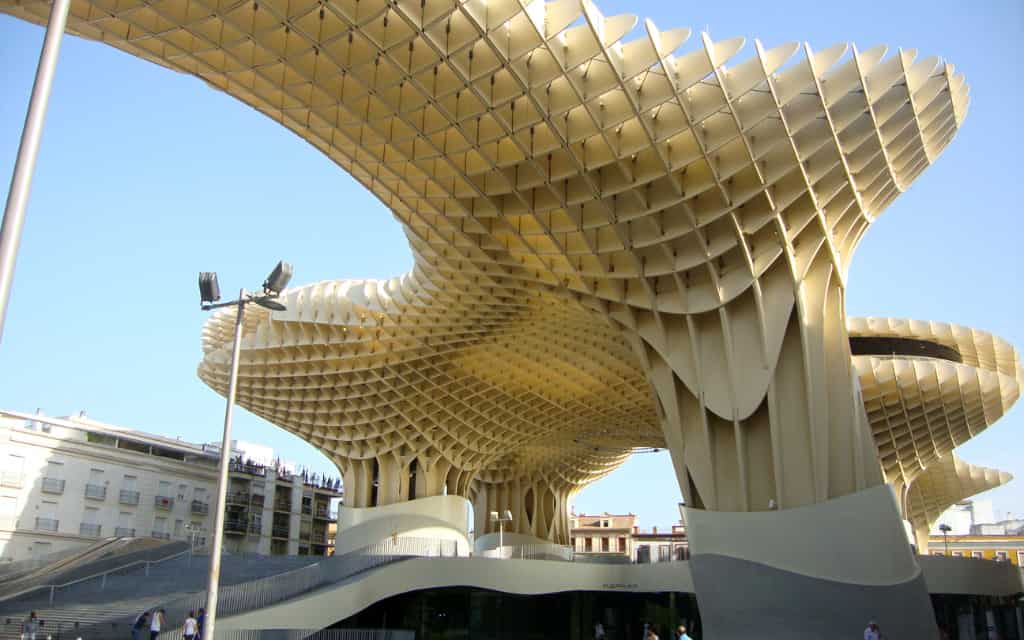
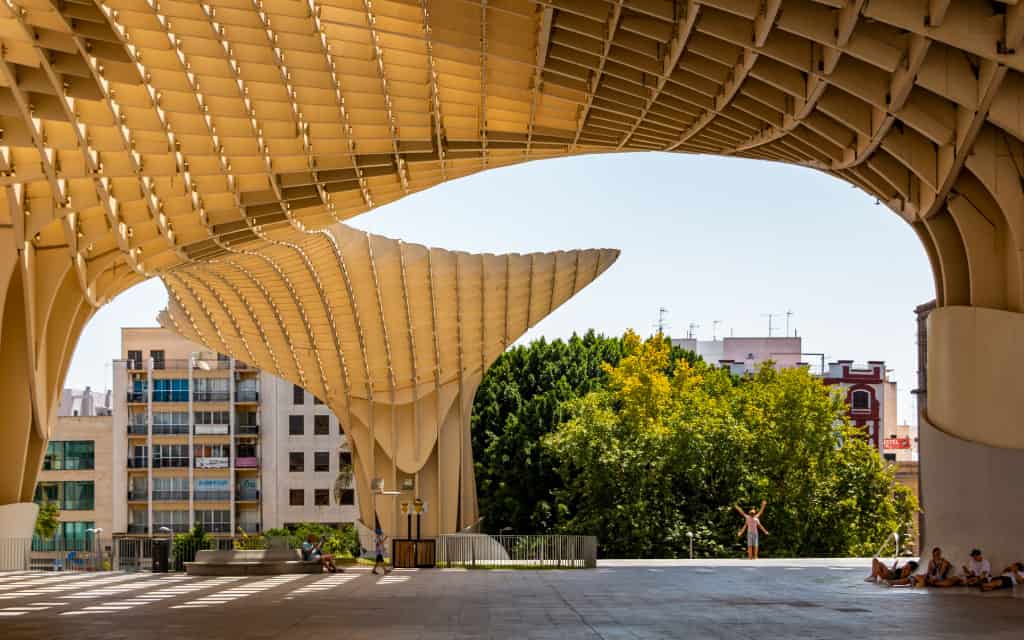
What was originally intended to be a parking lot was instead transformed into a masterpiece thanks to Mayer’s vision, which included incorporating remnants from the Roman colonial period into his design.
This is one of the best places to visit in Seville. Not to mention the breathtaking view of Seville from the special walkway and terrace (“El Mirador”).
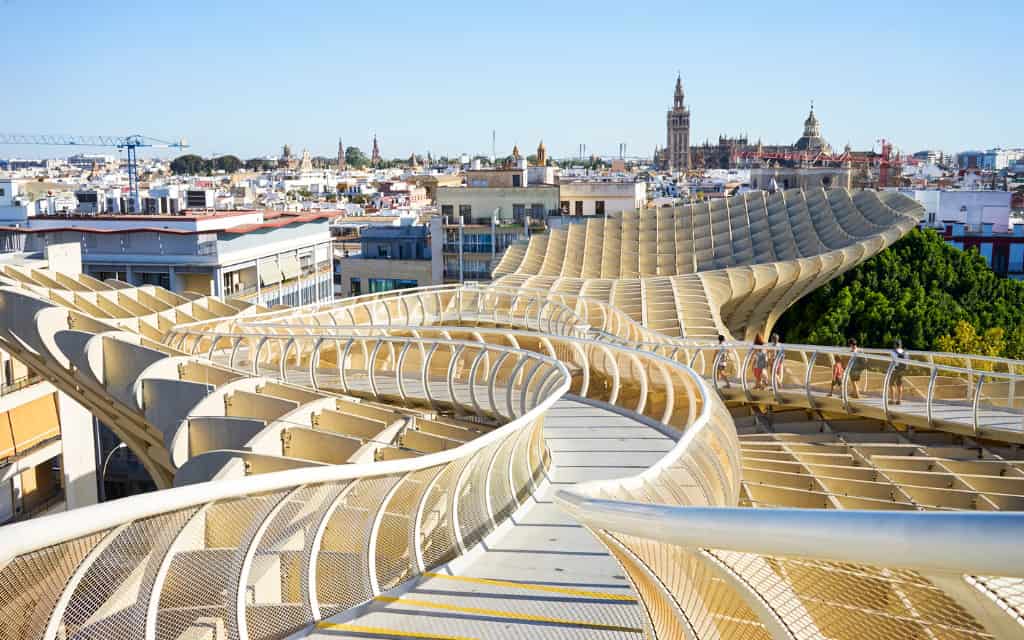
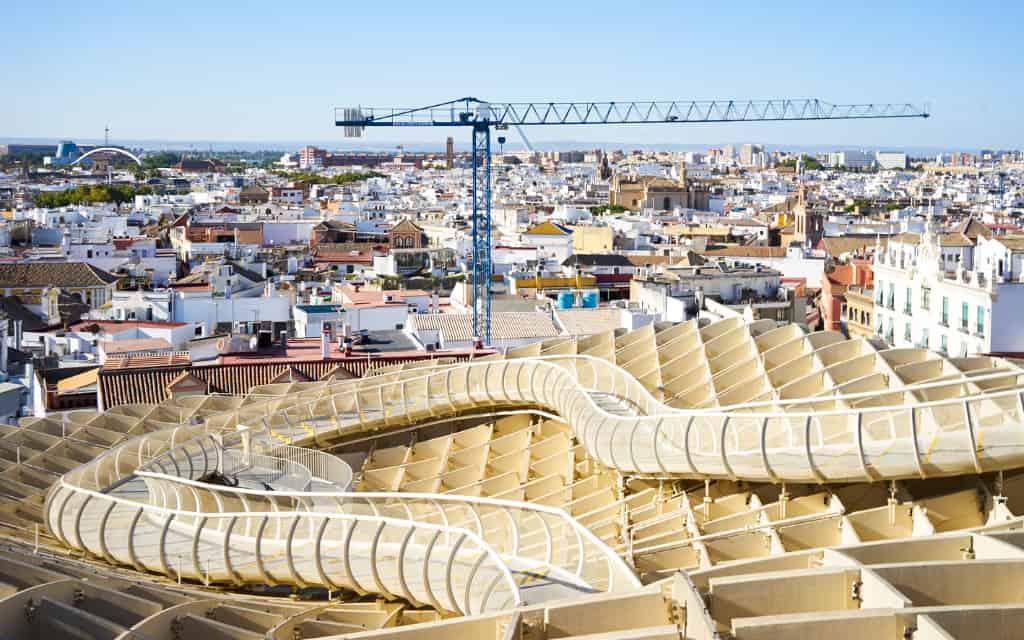
Admission and opening hours Metropol Parasol
Admission: Full admission is €15, reduced admission is €12 for EU students aged 15-25 and €10 per person for families with children. Children up to 5 years of age are admitted free of charge. Click here for tickets.
Opening hours: Metropol Parasol is open from April to October from 9:30-00:30 and the rest of the year until 00:00. The last entry is always 30 minutes before the end of opening hours.
7. Parque de María Luisa
María Luisa Park was once part of the gardens of San Telmo Palace, but in 1893 it was donated to the city to create a large public park. The result is a beautiful place full of greenery, colourful flowers, fountains, gazebos, waterfalls, statues and nooks where you can hide with a book and enjoy a perfect oasis of peace.
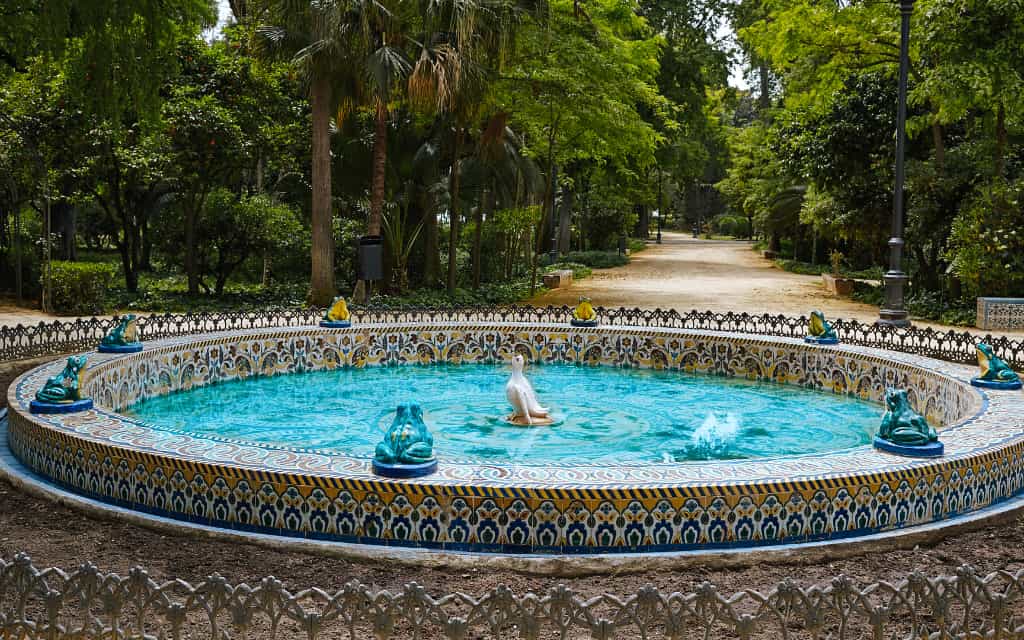
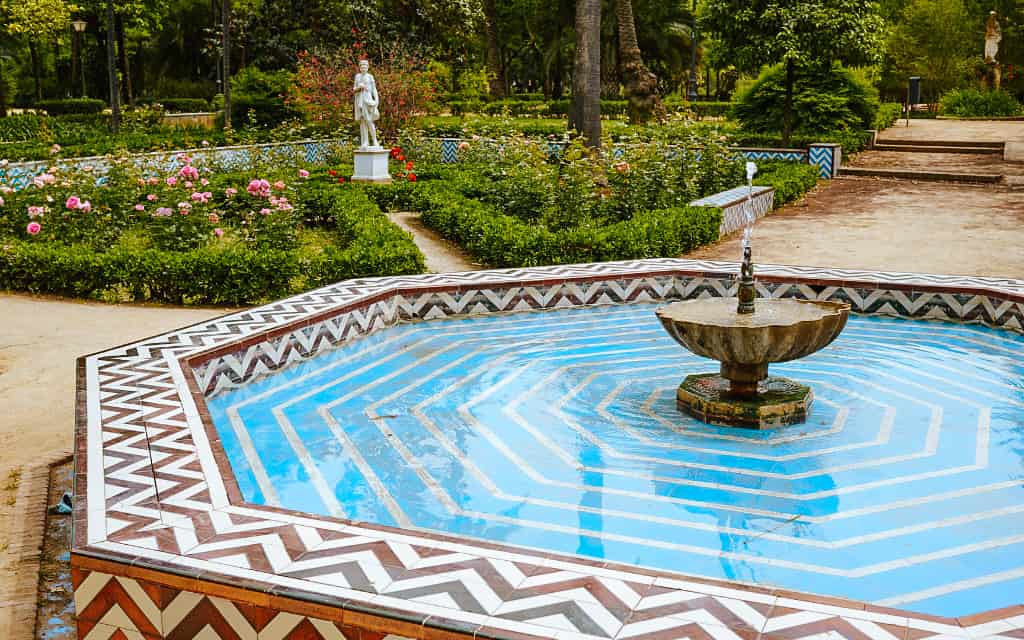
The park is an ideal place during hot summer days, when it provides relief thanks to the shady paths lined with Mediterranean trees. It blooms beautifully from spring, but the park is worth a visit at any time of the year.
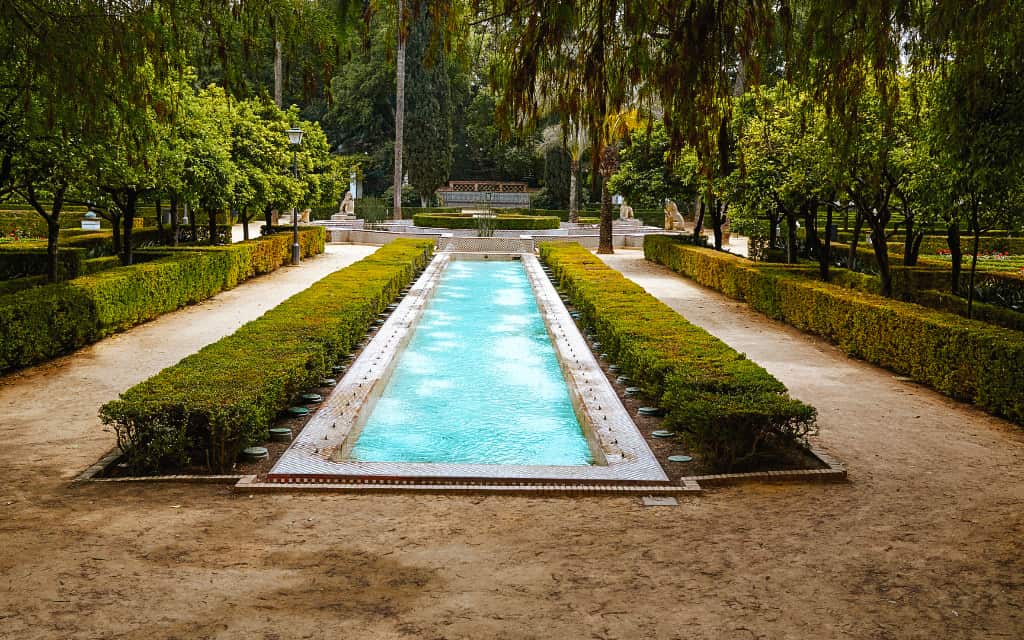
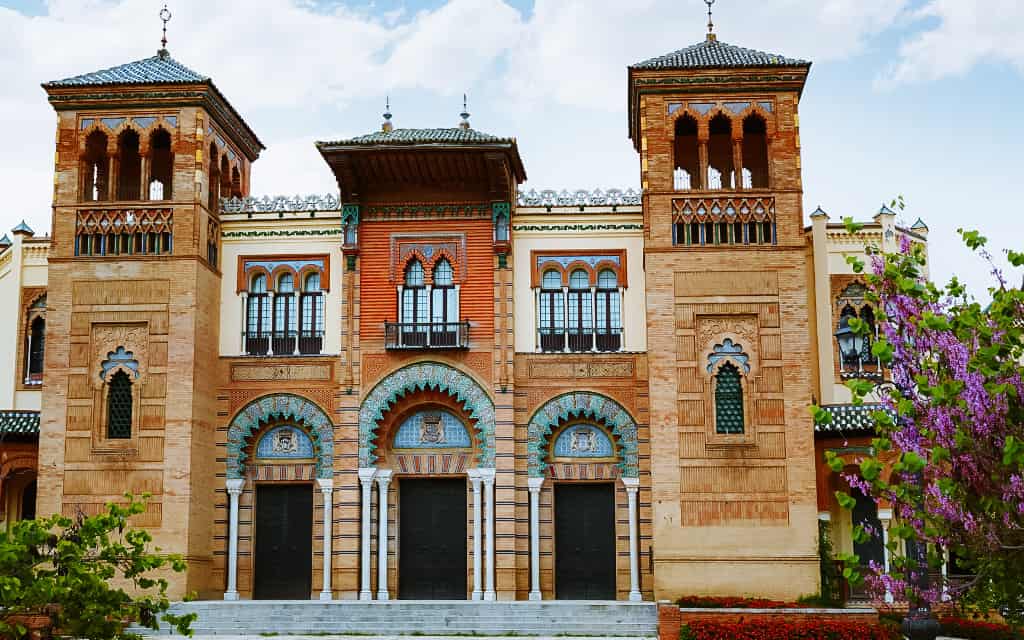
8. Santa Cruz
Santa Cruz, the former Jewish quarter of Seville, is a magical place where time stands still. Walking through the narrow cobbled streets past white houses with colourful doorways, you get the feeling that you have stepped back in time.
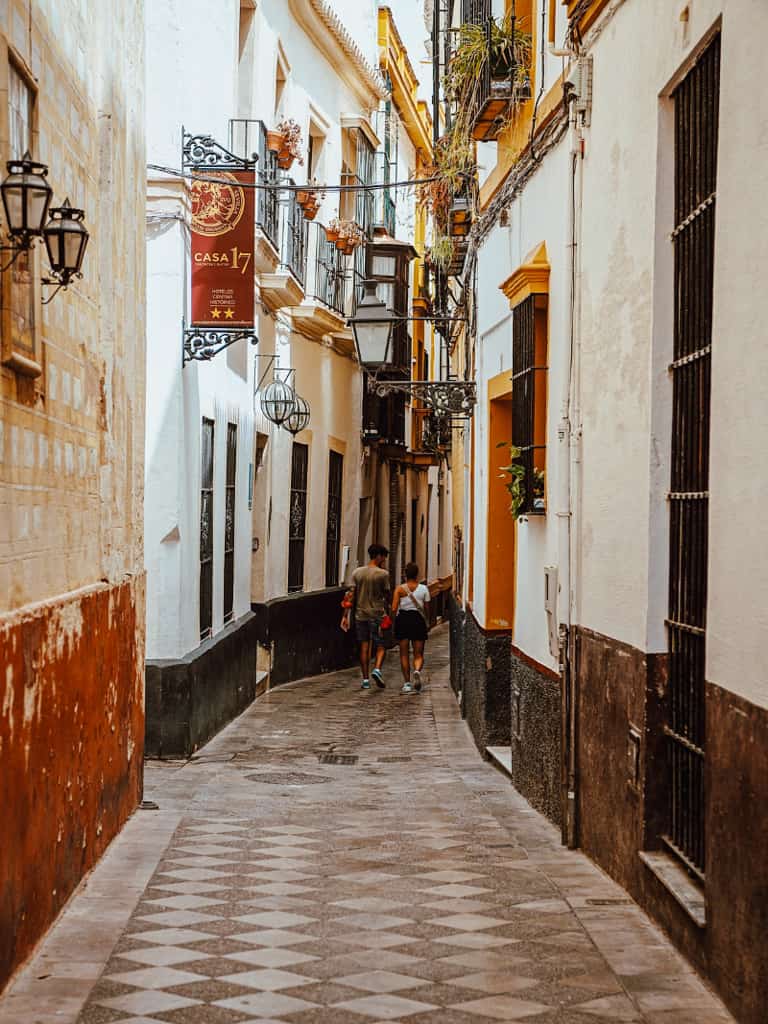
Tapas bars, restaurants and shops keep the place alive from noon to night. If you wander further, you’ll find magical alleyways that you’ll almost have to yourself.
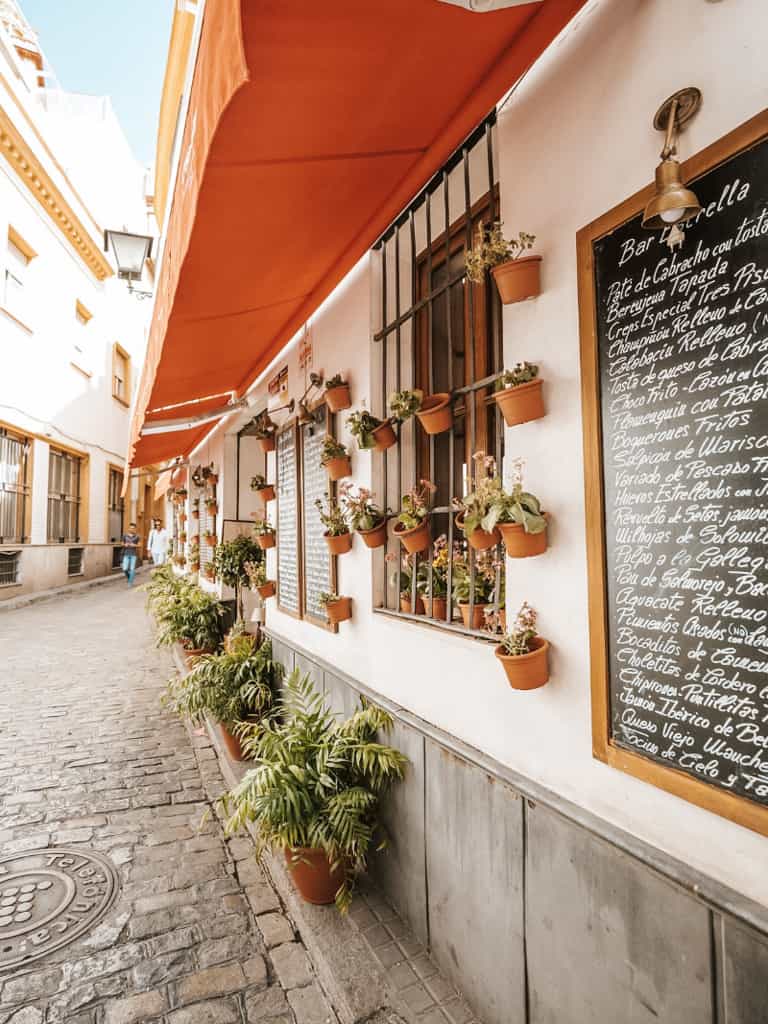
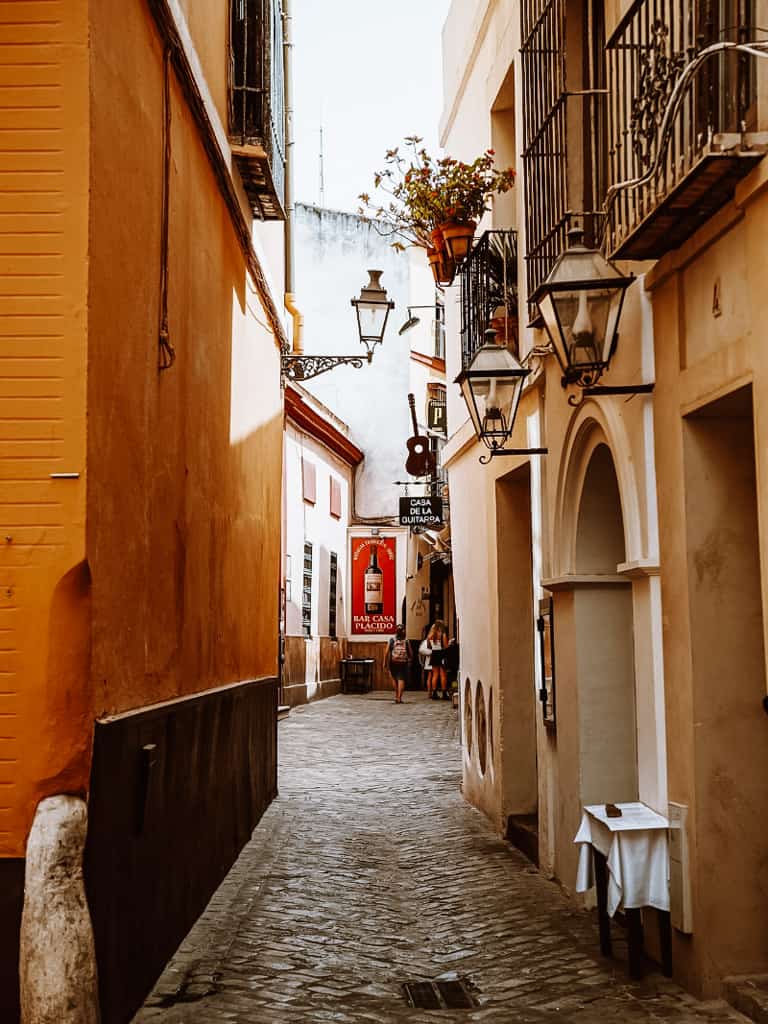
9. Real Maestranza Bullring
The Plaza de Toros de Sevilla is one of the most famous bullfighting arenas in Spain and has been standing since the 18th century. It is the site of the Feria de Abril, the largest bullfighting festival in the world.
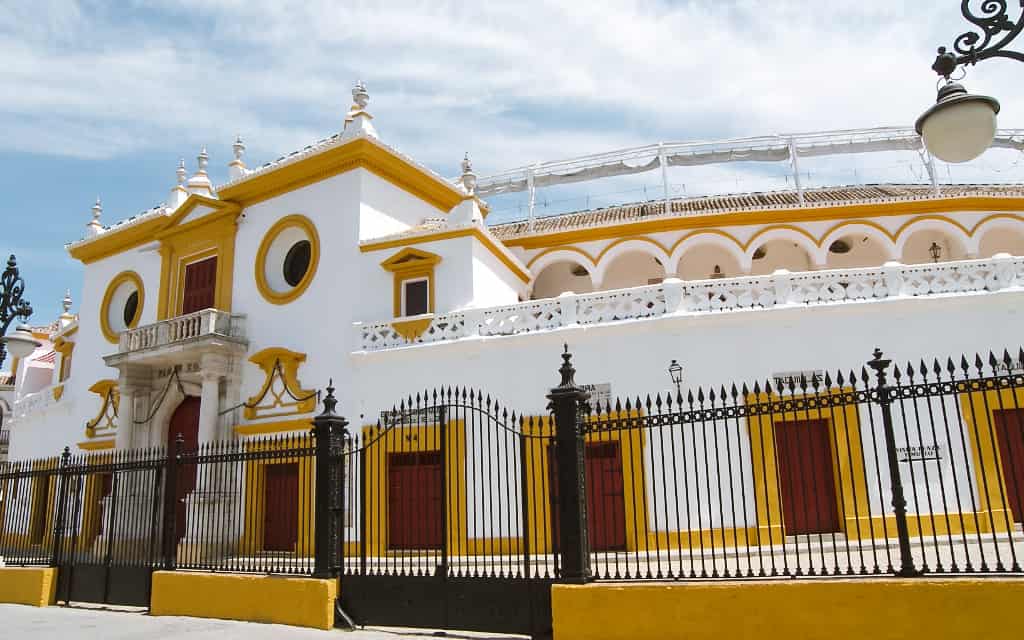
Inside you can see an extensive exhibition of artefacts documenting the history of bullfighting throughout Spain.
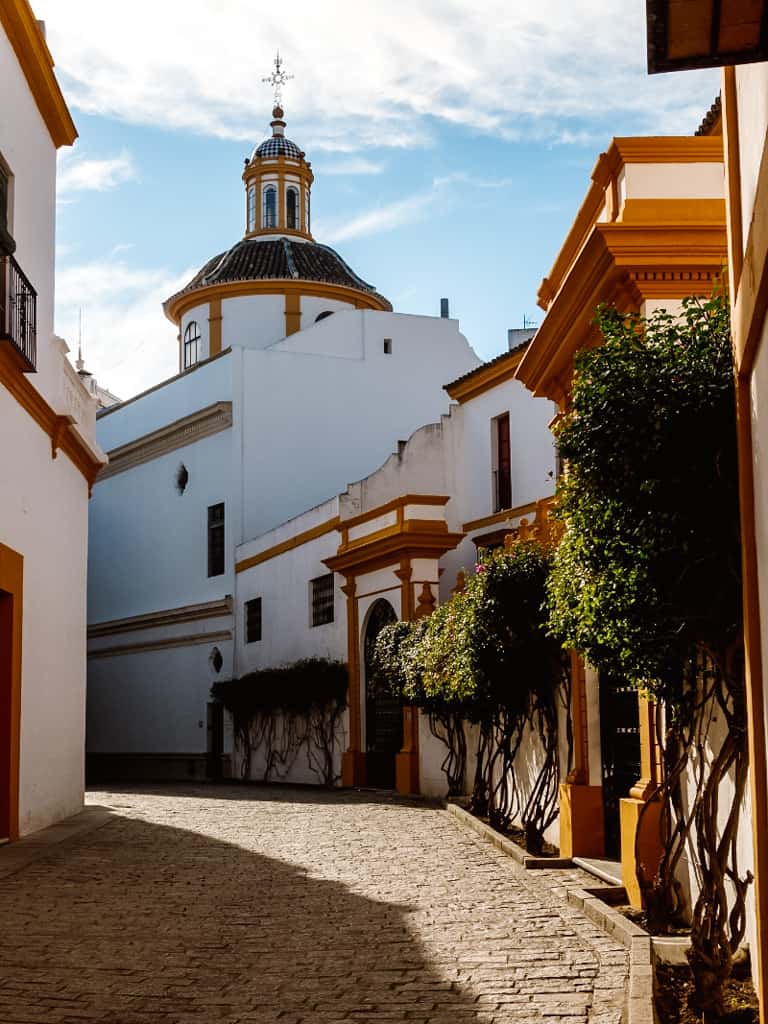
Admission: Full admission to the bullring is 10 €, reduced 6 € (seniors over 65, students 12-25 years) and reduced 3,50 € for children 7-11 years. Children up to and including 6 years of age are admitted free of charge. You can buy tickets here.
Opening hours: Open daily 9:30-19:30. On the days of the event, opening hours are shortened to 15:30. The last entry is always 30 minutes in advance.
Hotels in Seville 😴
10. Triana Market
Mercado de Triana is home to a fresh and varied assortment of fruits, vegetables, meats, herbs and fish that locals come for every morning. Amazing scents waft through the bustling marketplace and you’ll be completely engulfed.
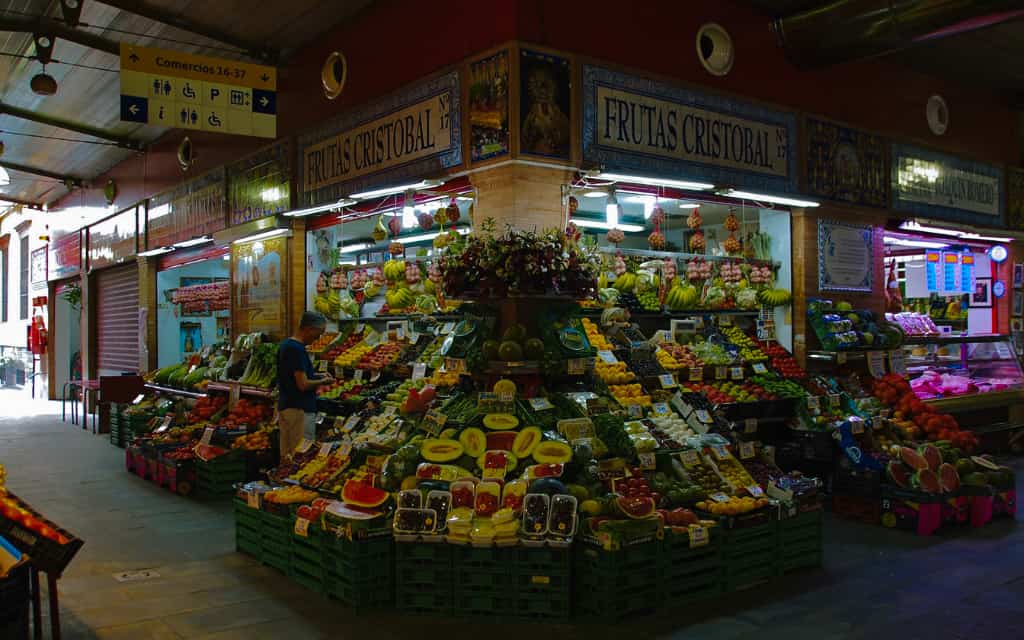
The history of the market is equally fascinating: from its creation in 1171 during the Arab era, to its use as the seat of the Inquisition in 1481, to its reconstruction for the World Expo in Seville (1992).
If you get a hankering for something good or want to shop for souvenirs, the Mercado de Triana is a great place to visit.
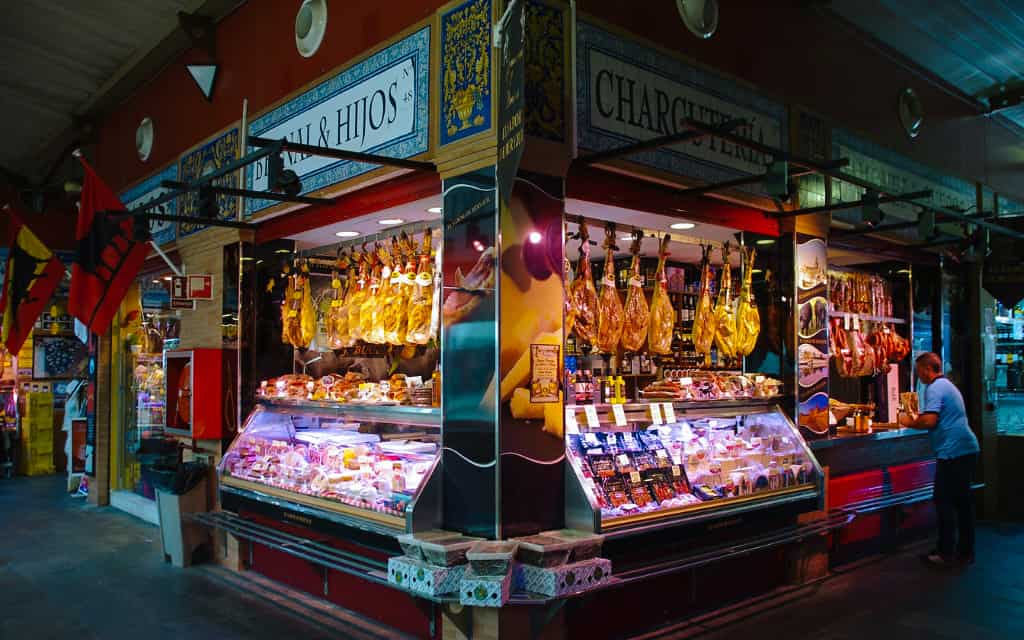
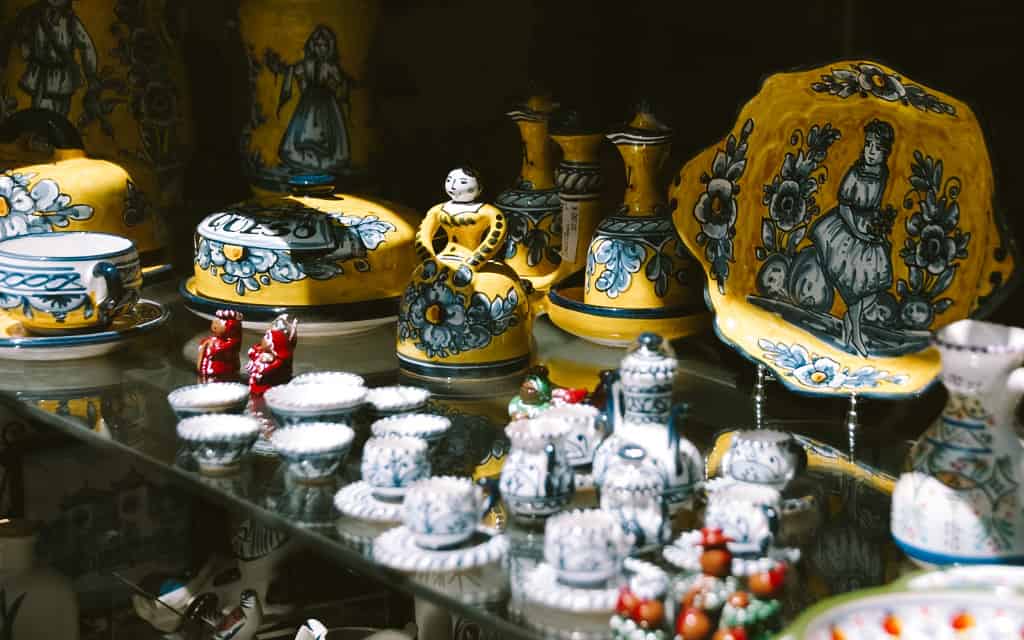
Opening hours: Mercado de Triana is open daily except Sunday from 9:00-15:00.
11. Triana quarter
Seville’s Triana district is a stunning and unique area that has played an important role in the city’s history. Located on the other side of the Guadalquivir River, it is renowned for its vibrant culture and authenticity.
The cobbled streets are lined with colourful tiles and Azulejos ceramics, and a great atmosphere runs through the area.
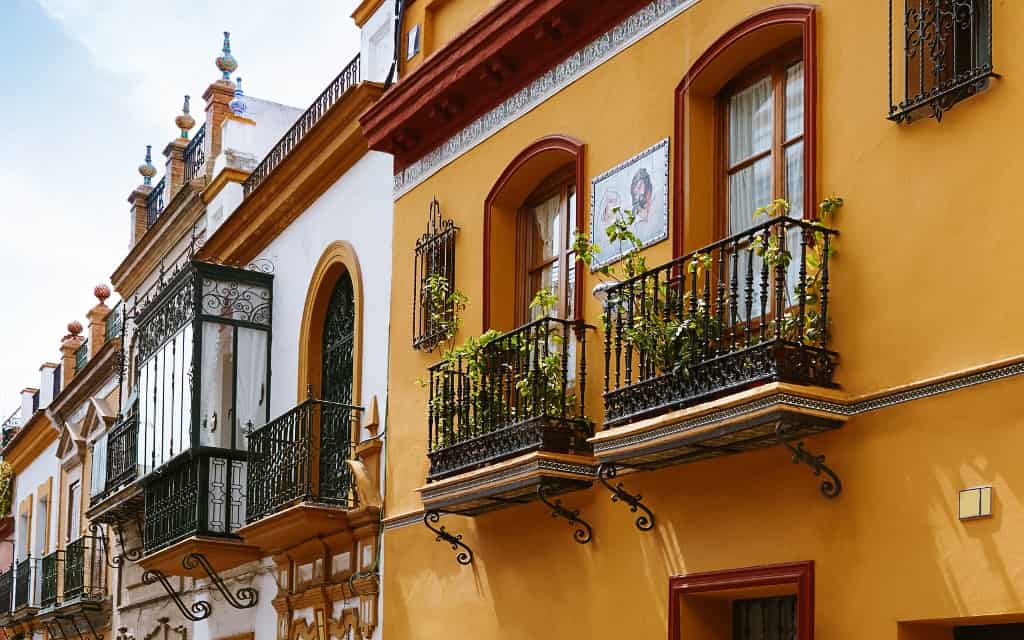
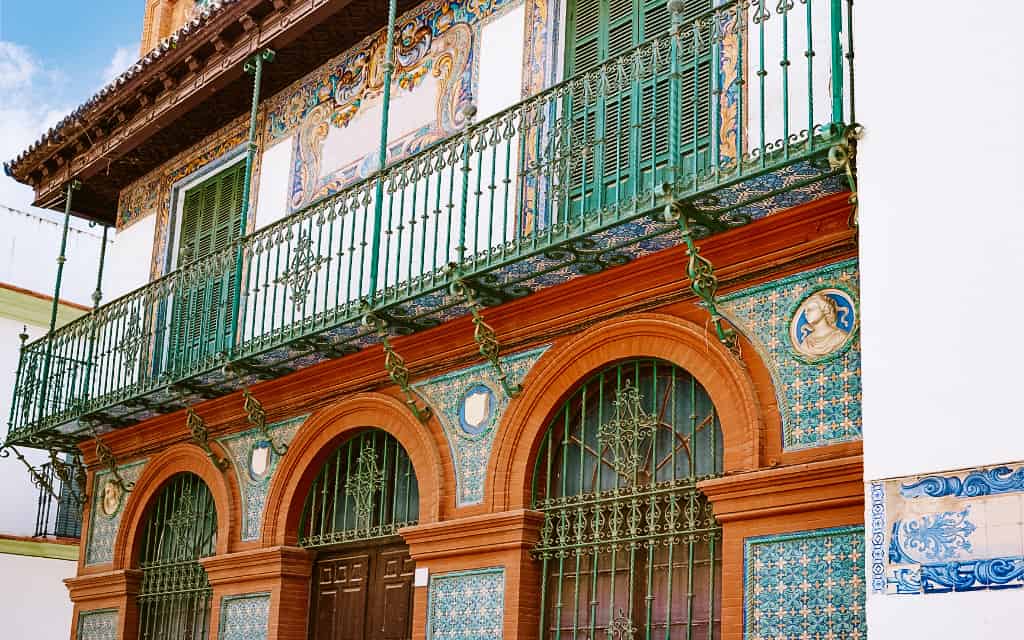

It has long been home to Seville’s poorest inhabitants and is considered the centre of flamenco and bullfighting. The Triana district is literally lined with numerous cafés and restaurants. If you are looking for excellent home cooking at lower prices, definitely head here.
I recommend to take a walk especially in the streets closer to the river, which are colourful, playful and fun (both left and right of the bridge). Further away from the river, the Triana district is mainly a quieter zone with classic apartment buildings.
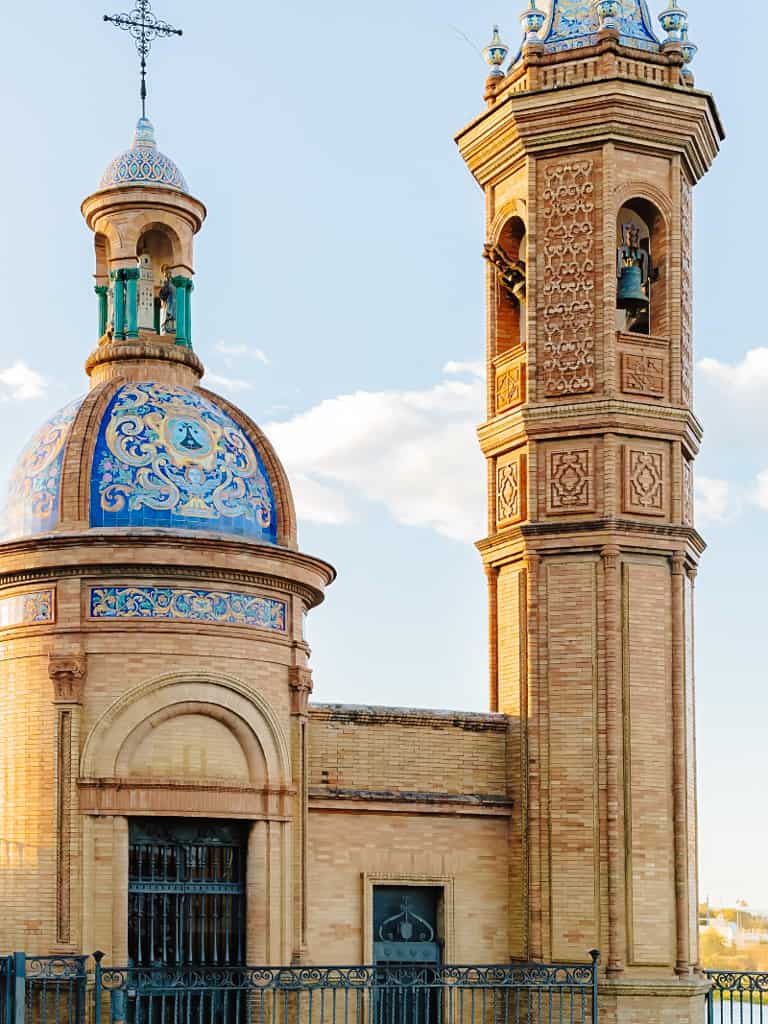
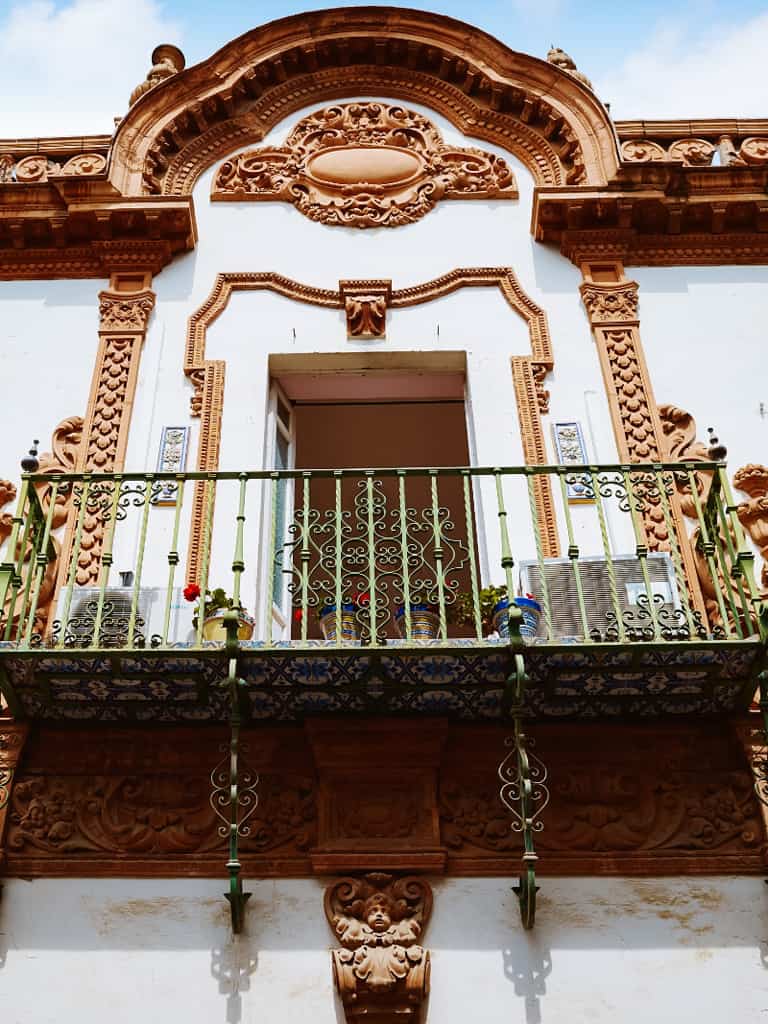
12. Casa de Pilatos
Casa de Pilatos is a magnificent 16th-century Mudéjar-style palace located in Plaza de Pilatos. The palace was inspired by the house of Pontius Pilate during his pilgrimage to Jerusalem.
After the Real Alcázar, this is one of the most beautiful palaces in Seville, which has survived in incredibly good condition since its construction.
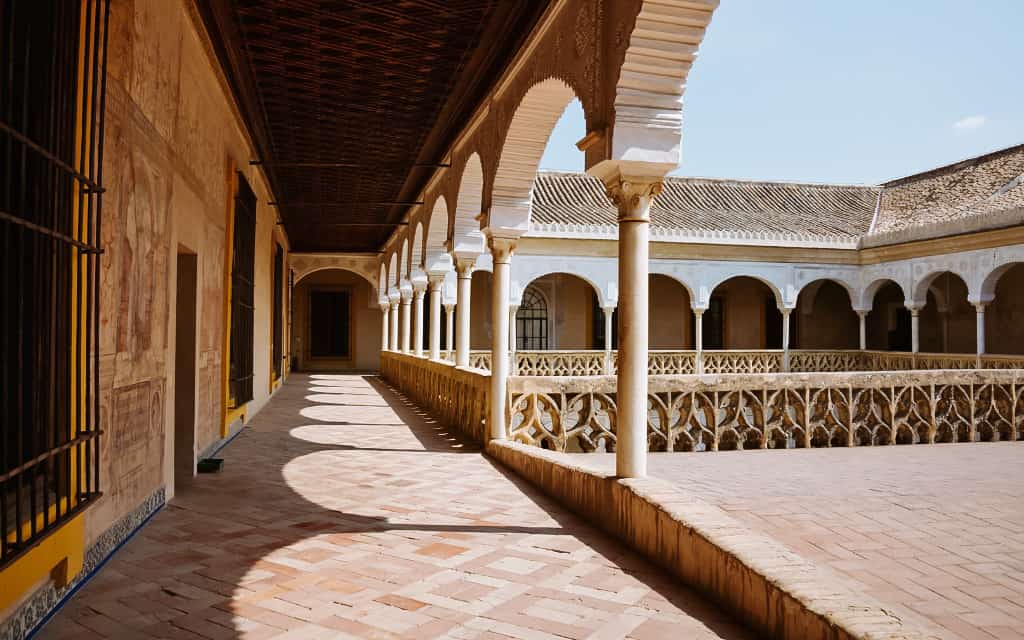
The palace is an amazing combination of architectural styles, including Gothic, Mudéjar and Italian Renaissance. Its magnificent courtyard features 24 busts of Roman emperors and Greek gods, marble columns, ceiling paintings, Mudéjar tiles and an Italian-style garden.
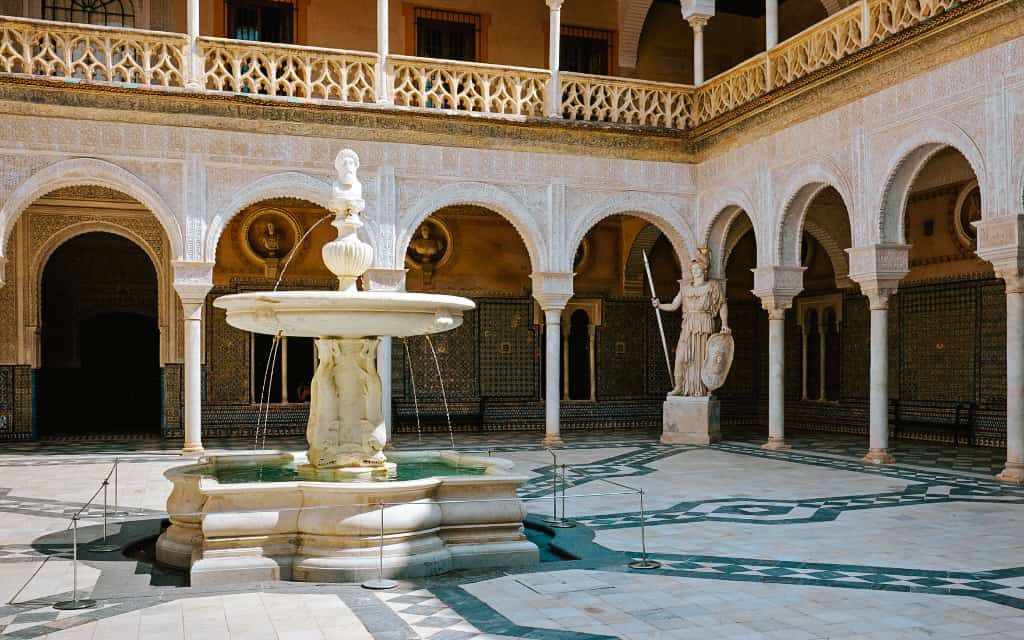
Admission: Full admission costs 10 € and reduced 5 €. Children up to 11 years of age are admitted free of charge. Click here for tickets.
Opening hours: open daily 9:00-18:00.
13. Collegiate Church of the Divine Saviour
The Collegiate Church of the Divine Saviour (Iglesia Colegial del Divino Salvador) is the second largest church in Seville after the cathedral. It is located in Plaza del Salvador in the city centre.
The origin of the church dates back to the 9th century, when it was known as Ibn Adabba, the Great Mosque of Muslim Seville. After the conquest of Seville by the Christians, its splendid status was preserved and the church acquired the status of a collegiate church.

The Salvadoran church is famous for its gilded wood, stunning main altar and many frescoes. In front of the church, it’s alive with tapas bars and restaurants.
Admission: Entrance to the Church of El Salvador is included in the ticket to the cathedral. If you are not planning a visit to the cathedral, the entrance fee to the church itself is €7.
Opening Hours: El Salvador Church is open Monday to Saturday 10:15-18:00 and Sunday 14:30-19:30. The last entry is always 30 minutes before the end of opening hours.
14. Palacio de las Dueñas
Las Dueñas Palace is a perfect example of a hidden gem in Seville. This palace dates back to the end of the 15th century. century and is a mixture of Gothic, Moorish and Renaissance architecture, making it one of the most unique and beautiful palaces in the city.
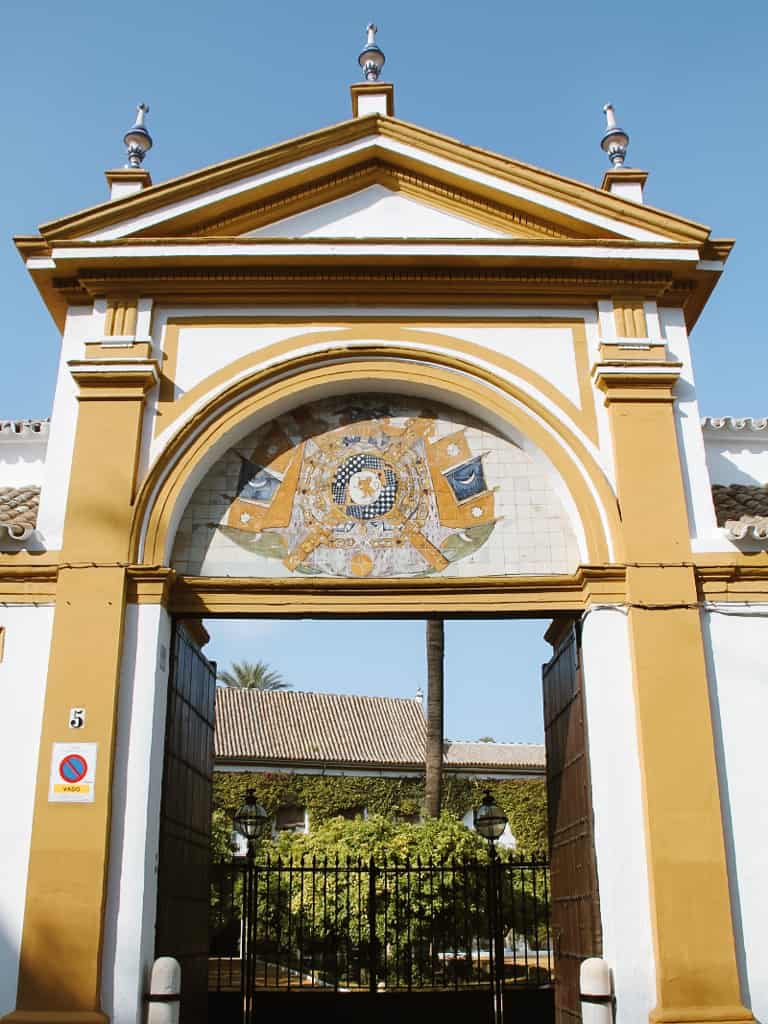
Las Dueñas Palace has been occupied by some of the most important personalities, such as the poet Antonio Machado, Queen Victoria and Jackie Kennedy.
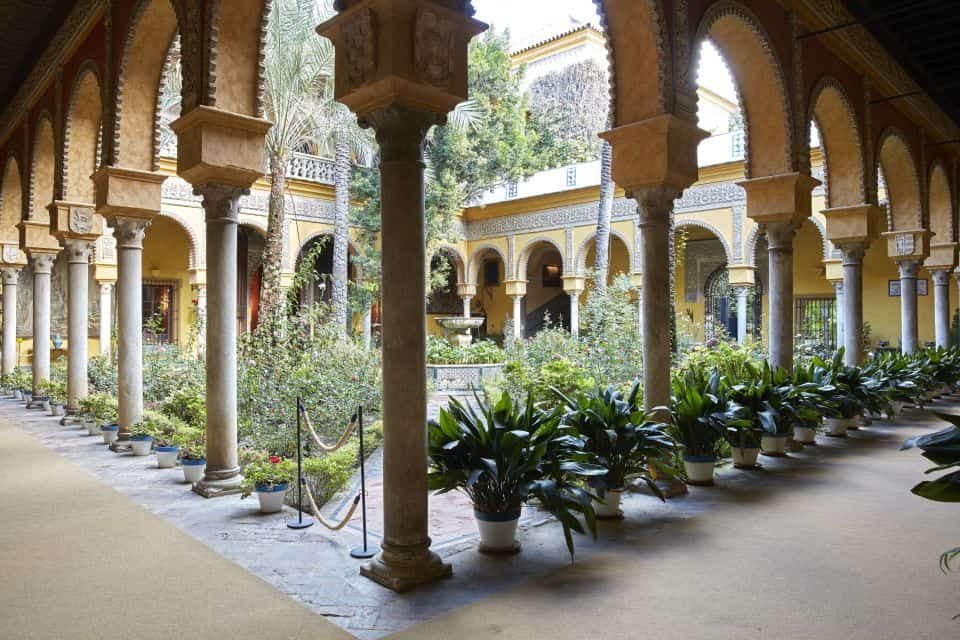
Admission: Full admission is 12 € and reduced admission is 10 € (children 7-12 years, students 13-25 years and seniors over 65 years). Click here for tickets.
Opening hours: Palacio de las Dueñas is open daily from 10:00-18:00.
15. Guadalquivir River
The Guadalquivir River flows across Seville from north to south. It is one of the largest rivers in Spain and was once the only link between the Mediterranean and the Atlantic Ocean.
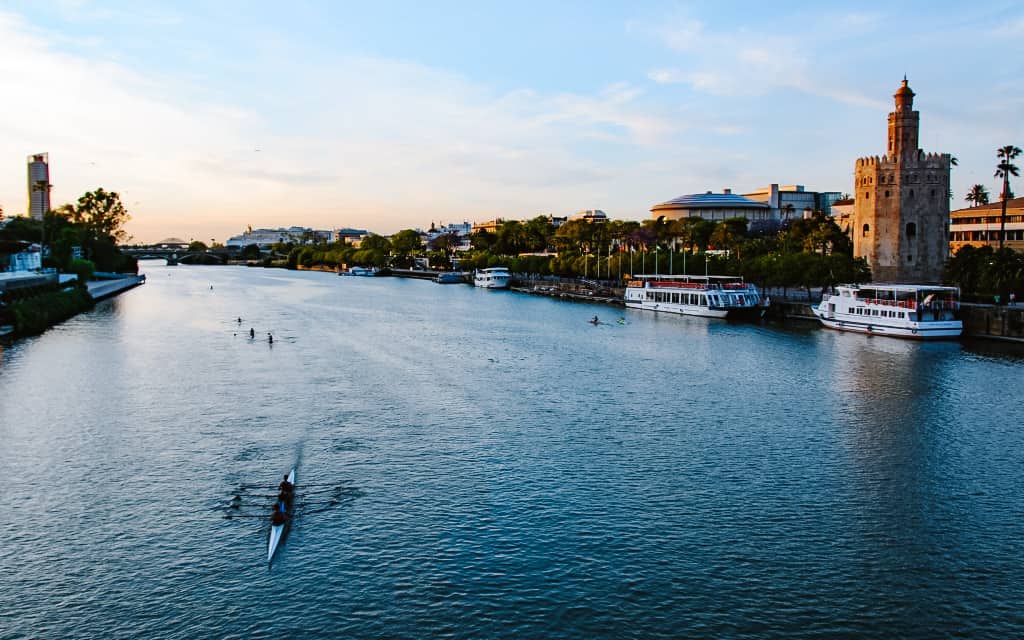
You can stroll along the river promenade, relax in one of the parks surrounding the river, or go on a boat cruise.
16. Flamenco Show
Flamenco has had a strong cultural tradition in Seville for centuries and its influence is still evident today. Flamenco in Seville offers a range of performances from traditional guitar music and dance to more modern forms. In many flamenco performances there is singing and clapping along with the performance.
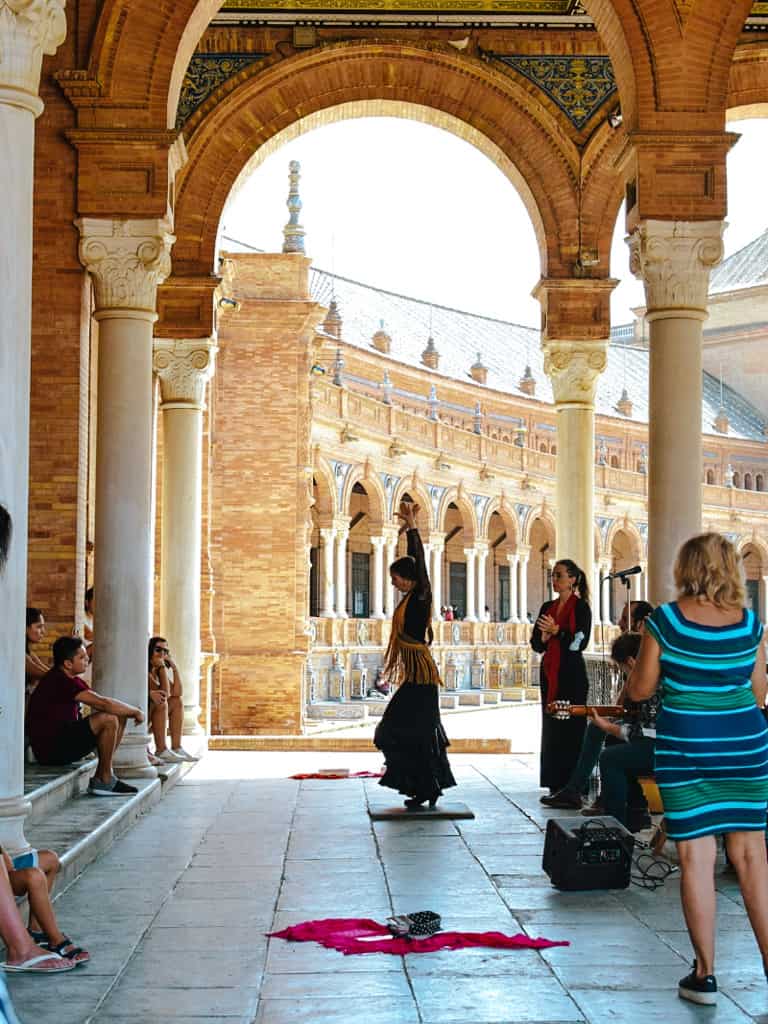
In addition to these elements, other instruments such as tambourines and castanets appear in some performances. You can join in the fun and enjoy an experience full of passion, energy and joy.
A flamenco show is one of the best ways to experience the local culture and incredible Andalusian atmosphere. The best performances take place in Casa de la Memoria . It’s a good idea to book tickets in advance, as flamenco is one of the most popular activities in Seville.
Things to do in Seville – map
HOW TO USE THIS MAP: Above you will find a detailed map with tips on things to do in Seville, Spain. Click at the top left of the map to see separate layers with highlighted locations. You can hide and show the different layers or click on the icons on the map to see the names of the places I mention in the Seville travel guide. If you want to save the map, star it. For a larger version, click on the icon in the upper right corner.
Where to stay in Seville?
- Catalonia Santa Justa – beautiful hotel with outdoor pool and terrace a short walk from the centre and the station
- Vincci La Rabida – 4* centrally located hotel decorated in traditional Andalusian style with views of Seville Cathedral
- Hotel Don Paco – pleasant 3* hotel in the centre 5 minutes from the Metropol Parasol with a rooftop pool and fantastic views
- Silken Al-Andalus Palace – modern hotel in the suburbs of Seville with a swimming pool and good access to the centre
- Casual de las Letras – cheap and cosy hotel 10 minutes walk from the cathedral
What to taste in Seville?
Seville has been a centre of cultural exchange since ancient times. Its cuisine features culinary influences from all over Spain and Europe, as well as Africa and the Middle East.
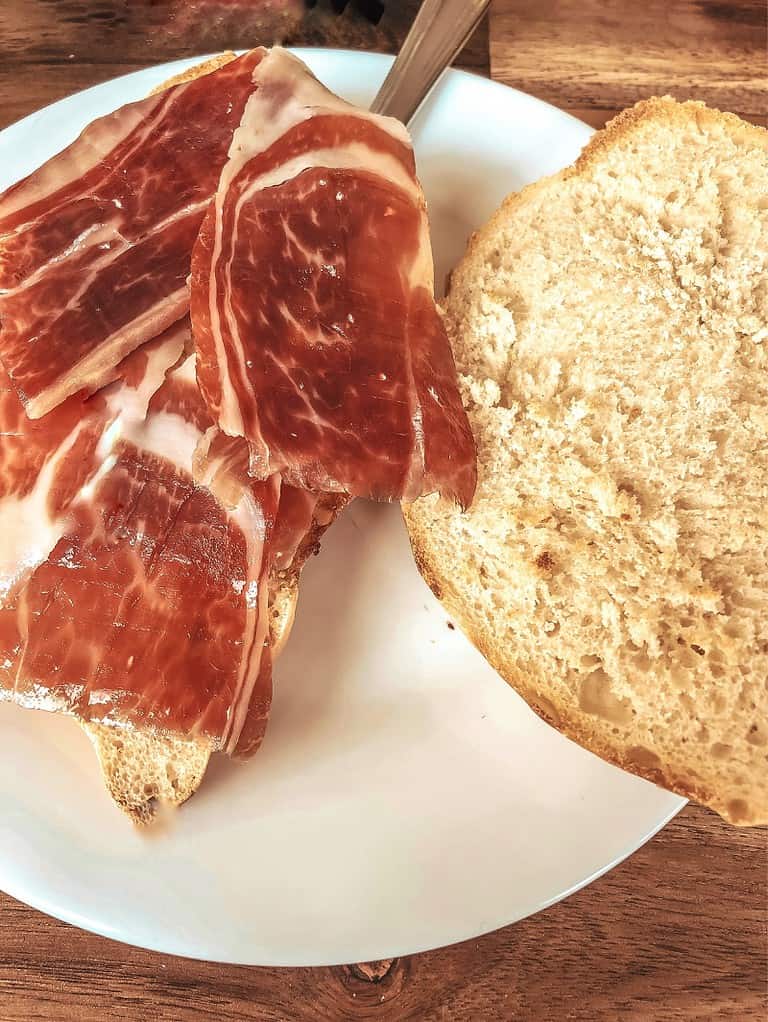
The locals love fish in all ways. And you can find them on almost every menu in a variety of forms – I recommend trying the fried fish freidurías.
Tapas are also very popular in Seville, from traditional abacerías to modern cuisine, allowing you to sample local delicacies at low prices. Plus, the tapas in Seville are supposedly the best.
Another typical snack or light dinner is the bocadillo de tortilla sandwich. This consists of a thick slice of Spanish potato omelette sandwiched between two slices of Spanish baguette (barra de pan).
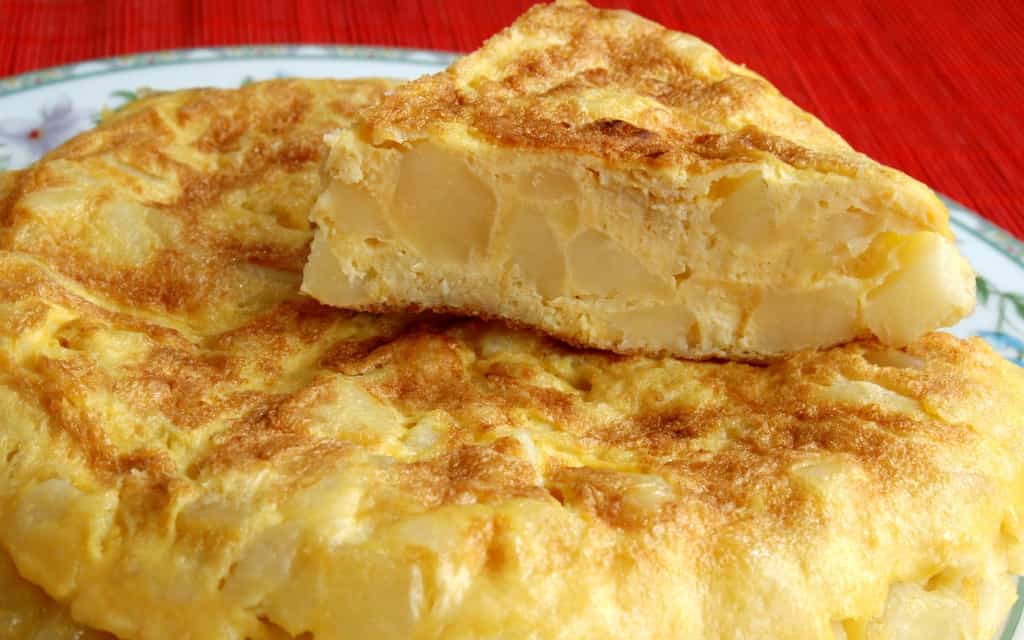
Tip: If you’re looking for a nice restaurant in the centre where the locals go too, try Los Coloniales. They have a good selection at nice prices. There’s also a great selection of Andalusian restaurants and tapas bars in the Triana district.
How to get to Seville
Seville is one of the most visited cities in Spain. This gives it excellent connections to other cities in Spain and Europe. It is easily accessible by car, train and air.
Flights to Andalusia
Seville has its own airport, which is not large – it is mainly used for domestic flights, but has connections to some European cities. For most European cities, flights to Málaga are a better option, from where Seville is easily accessible by train or car.
The easiest way to get to Seville from Prague is via Málaga, which is mainly served by Czech Airlines and, in high season, Eurowings.
The direct flight from Prague to Malaga takes 3 hours and 20 minutes. The airlines to choose from are:
- Czech Airlines – Traditional Czech airline that also provides hand luggage up to 8 kg in the price of the ticket.
- Eurowings – German low-cost airline that includes a small luggage bag with a maximum size of 40 x 30 x 25 cm in the price of the basic ticket – parameters that meet, for example CabinZero (28 l).
If the date doesn’t suit you, here you can search for flights with a transfer.
If you’re flying into Seville airport, the city centre can be reached in 35 minutes on EA’s direct shuttle buses (ticket price €4 or €6 return). Details can be found on the Seville Airport website here.
Trains and buses
From Malaga, Seville can be reached by direct train in 2 hours. Sevilla Santa Justa Central Station is about 20 minutes from the centre.
For train connections, visit the Spanish Railways Renfe website. You can buy tickets online (and get the best price) or at the station.
ALSA buses work well too, taking you to Seville from Málaga in less than 3 hours. Estación de Autobuses is located on the edge of the centre, about 15 minutes’ walk from the cathedral.
If you prefer to search all together, I recommend Omio.com, where you can find bus and train connections in one place. It’s clear and you can compare all the options.
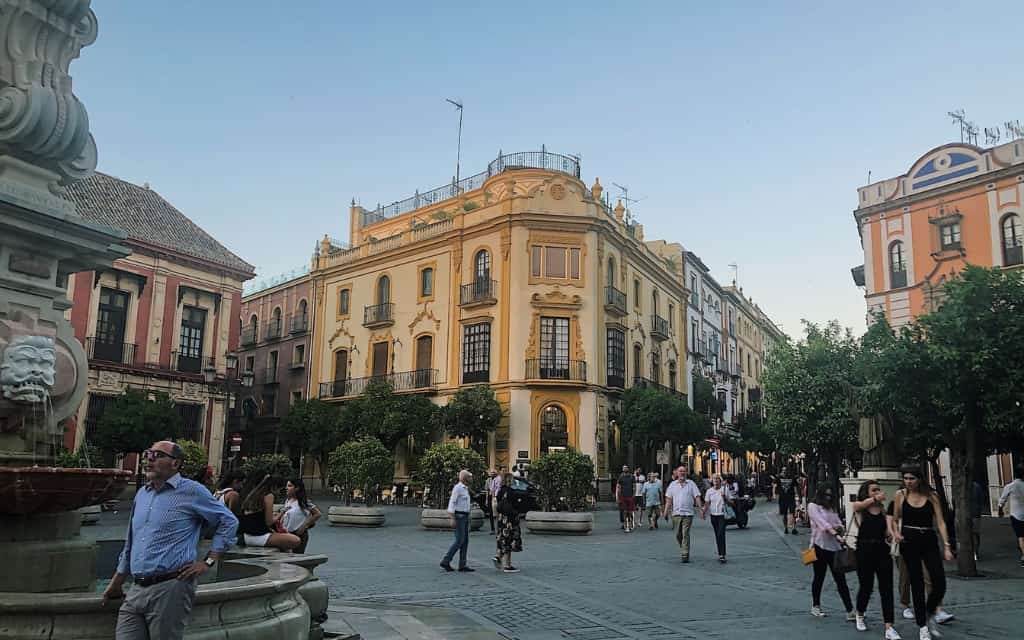
Car rental
Renting a car is one of the most popular ways to explore the surroundings of Seville and Andalusia, one of the most beautiful areas in Spain, at your own pace.
I recommend comparing offers from car rental companies to get the best service at the lowest price. Just beware that prices can vary between rental companies. In our experience, they offer the best prices and the widest range of Rentalcars.com.
To rent a car in Spain you will need a driving licence from your home country (non-EU citizens need an international driving licence), a passport and a credit card.
☞ In our guide to renting and driving a car in Spain, we share practical tips and useful links that will come in handy before your trip.
Parking
If you are going to Seville by car, make sure you allow plenty of time for parking. Parking in central Seville is very limited due to traffic jams and narrow streets where it is easy to get lost. In addition, the city tries to eliminate cars entering the city centre as much as possible.
For this reason, there are several free car parks on the outskirts of Seville, from where you can easily reach the city centre by public transport or taxi. Free parking is available at the Olímpico or Benito Villamarín stadiums, or at the Parque de los Principes public park. You can also park for free on the streets in the suburbs and take the city bus from there.
For those who want to find parking in the city centre, there are several parking garages that offer daily or hourly rates. Hotels also have their own parking garages.
If you plan to park on the street, pay attention to the coloured markings. White stripes mean free parking (almost impossible in the city centre), blue stripes mean paid parking, green stripes are for residents and yellow stripes are no parking. I recommend Parkopedia to find parking. It’s working great.
Transportat in Seville
Seville has an extensive public transport network including trams, metro and buses. The historic tram line 4 is famous for its iconic orange and cream trams that connect the north of Seville with the city centre.
On the other hand, Seville is easily accessible on foot. If you are staying in the centre or in the surrounding neighbourhoods, you will probably rarely use public transport.
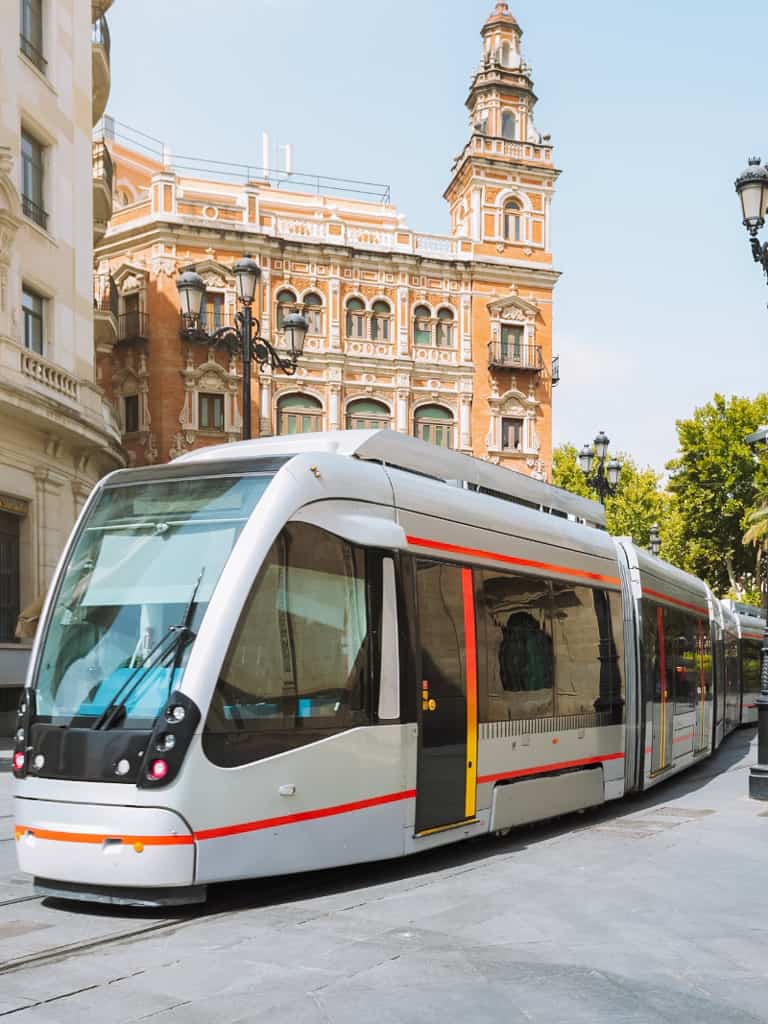
Metro
The modern metro system consists of two lines: line 1 runs from San Bernardo to Ciudad Expo, while line 2 runs along the banks of the Guadalquivir River in a circular route around the historic city centre.
A single ticket costs between €1.35 and €1.80 depending on how many times you change trains. The ticket is valid for a total of 1.5 hours and can be bought at metro stations. Or you can choose a day ticket for €4.50. Find more information about the Seville Metro here.
Buses and trams
The bus network offers frequent connections between different parts of the city and the surrounding towns and villages. Many bus lines also offer night services.
Single bus tickets cost €1.40 and can be bought directly from the driver. Tram tickets are available from ticket machines at tram stops.
Another option is day passes, which give you unlimited bus and tram travel. The card is available for 1 day for 5 € or for 3 days for 10 € (+ deposit of 1,50 € per card). If you plan to ride more often, you can get a plastic card (+ deposit of €1.50), which you pre-charge. You’ll get better fares on buses and trams. More information here.
Double decker sightseeing buses
A pleasant way to get around the city are
double-decker sightseeing buses. They pass the main points in Seville and you can get on and off at any time. It runs frequently and at regular intervals.
Taxi
Public transport is supplemented by taxis, which are affordable in Seville. Taxis can be found at designated stands at the airport or train station, or you can simply wave at them.
Official taxis are white with a yellow stripe on the side. If they are free, they glow green. You can also call a taxi using an app – Pidetaxi works well.
The starting rate for a taxi starts at €1.40. The price for 1 km is 0,97 €. The specific price depends on the zone and time. Just beware that not all taxis accept credit cards. Better take cash and plenty of change.
Round
Warm, sunny weather, flat terrain and hundreds of kilometres of cycle paths make Seville the perfect city for cycling. Seville is extremely bike-friendly and there are plenty of stations in and around the city centre where you can pick up your bike. There are several price plans to choose from that will fit almost everyone’s needs.
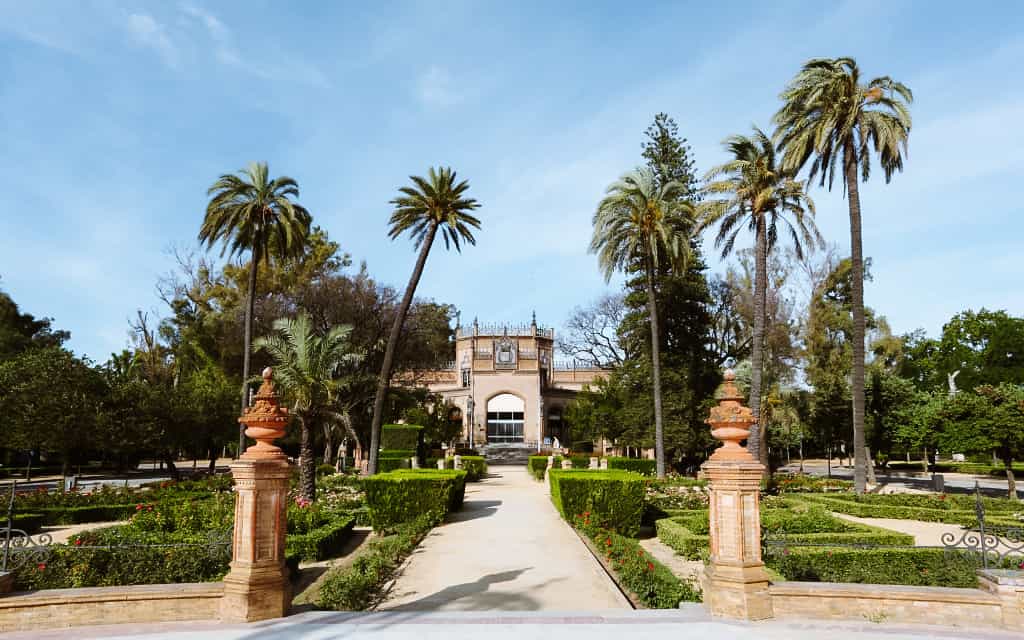
Practical information before visiting Seville
- Currency: euro
- Official language: The official language of Seville is Spanish. You can’t fully rely on English here (especially where there are more locals than tourists or if you stay in a smaller guesthouse). However, the locals are friendly and will make an effort to communicate with you, even if they don’t speak English.
- The informal greeting in Spain is hola. Basic Spanish phrases:
- Buenos días – Hello
- Buenas noches – Good evening
- Gracias – Thank you
- Helados – Ice cream
- Por favor – Please
- Safety: Seville is a safe city for tourists. It has a low crime rate and police are almost everywhere. In addition, most of the locals are friendly and helpful, so they will be happy to help you if you need it. However, it is always important to take care when travelling – especially if you are travelling alone. It is best to stay in well-lit, populated areas at night and avoid carrying large amounts of cash or expensive jewellery.
- Siesta: Southern European countries are known for siestas between 1 pm and 4 pm. However, this applies more to the off-season or to restaurants and shops frequented mainly by locals.
When to visit Seville?
The best time to visit Seville, Spain is from April to October. The climate in Seville is warm and sunny, making it ideal for outdoor activities and sightseeing. The days are long and most festivals are held in the summer months. Seville is famous for its colourful festivals, such as Feria de Abril and La Semana Santa, and these celebrations draw large crowds from all over the world.
Keep in mind that temperatures reach around 35 °C in July and August. During the siestas in August, locals often go to the sea, so some of the more local restaurants and shops are closed. On the other hand, accommodation prices may be lower (yes, really lower) during this period.
If you’re looking for fewer tourists, consider visiting Seville between November and March. In addition, the temperatures are pleasant, between 10-20°C, which is ideal for exploring Seville.
Plan your trip quickly and easily. If you buy something through our links, we get a small commission. You pay nothing extra. Thank you!
This was our travel guide to tips on things to do in Seville. Do you have a question? We’ll be happy to answer it in the comments below. Have a safe journey!
More information about Spain
ANDALUSIA: Seville is located in the Andalusia region, one of the most beautiful areas in Spain – in our Andalusia guide, we’ve put together tips on the best places to visit in Andalusia. The most popular seaside resort in Andalusia is Málaga.
GRANADA: Granada is a historic gem near Seville, home to the world-famous Alhambra Palace. Read our guide with tips on the best things to do in Granada.
VALENCIA: Valencia is another beautiful city in Spain. We’ve put together a complete guide to visiting Valencia, including tips on things to do in Valencia.
MADRID: Get inspired by our tips on the best things to do in Madrid.
BARCELONA: Barcelona is the most visited city in Spain, along with Madrid. Check out tips on the things to do in Barcelona (entrance fees, opening hours, photos, map) or plan your trip with the Barcelona in 3 Days itinerary.
SPAIN: In our list of the best places to visit in Spain, we give you tips on things to do in Spain.
In our guide to renting and driving a car in Spain, we share practical tips and useful links that will come in handy before your trip.
Read even more tips on travelling to Spain.
Summary: Things to do in Sevilla, Spain
Seville is a beautiful city. It is literally a joy just to walk its streets. From the Jewish quarter of Santa Cruz to the authentic Triana district. Still, there are a few places that you definitely need to see when visiting Seville – the Real Alcázar, Seville Cathedral with its bell tower, Spanish Square, Metropol Parasol and Torre del Oro are at the top of the list.
In 2-3 days you will explore the historic centre, the surrounding neighbourhoods and visit some of the most beautiful sights in Spain. Just to visit the Real Alcázar, you will need 2-3 hours to explore its courtyards and gardens. Seville Cathedral is one of the largest in Europe, so you need to make more time for it.
Seville has excellent tapas – you’ll find a tapas bar on almost every corner. Besides, locals enjoy fish in all forms – if you don’t mind fried, try the freidurías. Another typical snack or light dinner is the bocadillo de tortilla sandwich. This consists of a thick slice of Spanish potato omelette sandwiched between two slices of Spanish baguette (barra de pan).
